|
Within the Movie ‘Merry Christmas Mr Lawrence’ a Japanese POW Camp Commandant decides that the prison population of European (military) inmates are ‘spiritually lazy’. When being beaten or made to stand for hours in the sun had not altered this situation, the Japanese Officer decided that the Camp population would undergo the Shinto ritual of ‘Misogi’ (禊) – in this instance – involving a 24-hour fast-period of no eating or drinking. This is despite the daily ration being intolerably low to start with. Most prisoners – even the stronger men – were on the brink of starvation. The Japanese Officer (Captain Yanoi) – by further depleting the starvation rations - would also adhere to this ritual of ‘fasting’ whilst traditionally dressed - and sat in meditation in the Camp ‘Dojo’. This is the pristine training hall used by the Japanese Officers for martial arts and spiritual practice (a mixture of Buddhist and Shinto spiritual traditions). Similarly, in the book ‘Empire of the Sun’ written by JG Ballard – the (civilian) POW Camp (Assistant) Commandant (Sergeant Nagata) occasionally orders Chinese vagrants (often women and girls) to be ‘beaten to death’ by Japanese soldiers wielding wooden clubs. The actual 'Commandant' - Hyashi - was in fact a 'civilian' and a careerist diplomat who tended to only interfere in Camp daily activities if absolutely necessary. Obviously, Hyashi never interfered in Nagata's brutality. These starving Chinese people sit patiently outside the POW Camp waiting to see if they will be allowed in to receive a portion of the already meagre rations. The women and girls are often raped by the Japanese guards before the Camp populace of British people are assembled to watch the unfolding ritual of ‘despatch’. Sergeant Nagata believes the British POWs are ‘spiritually lazy’ and seeks to stimulate their individual (and collective) ‘ki’ (氣) flow. This ‘life force’ not only flows through each individual body – but also through the entire Camp. As Sergeant Nagata believes the Chinese people to be an ‘inferior race’ – their brutal murder (achieved through a demonstration of ‘Japanese’ manly vigour) – will ‘release’ the ‘ki’ from their (broken) bodies and supplement that available throughout the Camp. The two primary Shinto rituals on display in both of the above examples are: 禊 (Misogi) – Purification (Cleansing) of the inside and outside of the mind and body. 祓 (Harae) – Purification (Exorcism) of corruption out of the interior of the mind and body. As this ‘Kanji’ is in fact comprised of ‘Chinese’ ideograms, I can read these characters and give some type of explanation as to what these rituals are supposed to represent – at least in a historical context. I say this as the rubric of Japanese ‘spiritual’ fascism distorted (for decades) rituals and practices that would normally not have been so severe or murderously brutal. Bear in mind that within ten-years of WWII being over – Western students of Judo, Kendo and Karate-Do were avidly volunteering to undergo these rituals – albeit in a non-war setting. Nevertheless, the rituals that the Imperial Japanese used to torture and murder millions of Western and Asian people – are today routinely considered part and parcel of a legitimate Japanese martial arts practice. On the face of it, this is an extraordinary rehabilitation. As Chinese ideograms, these ‘Kanji’ characters can be read as follows: a) 禊 (xi4) is comprised of an upper and lower particle: Upper Particle = 气 (qi4) – refers to ‘energy’, ‘breath’ and ‘vital force’ Lower Particle = 米 (mi3) – denotes husked ‘rice’ that needs to be ‘cooked’ (transformed) in water Therefore, 禊 (xi4) suggests that the process of cooking rice in a cauldron (by lighting a fire underneath and boiling the water) not only produces nutritious food (which sustains all physical life) but also generates ‘steam’ as a useful and yet crucial by-product. This steam - through the (hidden) ‘pressure’ created - ‘lifts’ the lid of the cauldron with an effortless ease. It is this ‘unseen’ influence of a physical process that drives this concept. b) 祓 (fu4) is comprised of of a left and a right particle: Left Particle = 礻(shi4) is a contraction of ‘示’ (which denotes an ‘altar’ and the ‘rituals’ associated with it) – and refers to structured acts of ‘instruction’, that require ‘attention’ and possess great ‘importance’. Lower Particle = 犮 (ba2) denotes a ‘dog’ (犬 – quan3) that is ‘running’ (丿- pie3). The implied meaning is to perform a dramatic task with the appropriate amount of effort and required energy. This suggests that a religious ritual must be correctly performed (as if in a temple or at an altar) in the physical world - that opens a connecting door-way to the spiritual world. Once this channel has been correctly opened – the influence of the spiritual world is then allowed to positively flow (unseen) into the material world – thus influencing temporal events. Correct (disciplined) and timely action in the physical world is the basis of this concept. Success is defined as achieving an exact ritualistic replication that does not deviation from the accepted norm – as ‘deviation’ of any sort is tantamount to ‘ill-discipline’. Conclusion Armed with this knowledge, it can be suggested that the Japanese concept of ‘禊’ (Misogi) refers to arduous physical activity that requires ‘sweating’. Through hard and continuous labour – a definite and positive metamorphosis is produced in the material world – that possesses definite (but ‘hidden’) implications for the inner world (almost as a side effect). By way of comparison, ‘祓’ (Harae) refers to a metaphysical ritual that although partly physical in its ritualistic content, remains nevertheless ‘metaphysical’ in nature and intent. This is because ‘祓’ (Harae) constitutes a ‘purifying’ spell achieved through words, actions, and a specific and certain state of mind.
0 Comments
2024-02-19 China Daily Editor: Li Yan Tongliang's promotion of its proud dragon dance heritage paying off
Cai Mingcan, a 47-year-old artist in Chongqing, Southwest China, who has been preserving and modernizing Tongliang dragon dance for 30 years, is glad to see it gaining popularity, especially among the young. "As the heirs of the dragon, all Chinese love the creature, and we shoulder a responsibility to pass on the dragon culture," he said. Tongliang, a district in Chongqing, claims to be the home of the country's best dragon dance performance, a nationally listed intangible cultural heritage. One of the best practitioners in the area is the National Tongliang Dragon Dance Troupe, which was honoured as such by the Chinese Dragon and Lion Dance Sports Association in 1999. Cai, the only professional artist among a handful of municipal-level Tongliang dragon dance inheritors, became coach of the troupe in 2012. In 2021, the national troupe was integrated into the Tongliang Dragon Art Troupe, which was established that year, and Cai became the art troupe's deputy director and coach. The troupe of more than 50 performers — with an average age of only 21 — consists of the national team and three other teams. Eighteen members are women, and 85 percent of team members are local residents, Cai said. The teams have performed in more than 30 countries and regions, including the United States, Britain, France, Australia, Turkiye, Japan and South Korea. The Tongliang dragon dance has been showcased at such major events as China's National Day celebrations, the 2008 Beijing Olympics and the 2010 Shanghai World Expo. On New Year's Eve in 2017, it wowed audiences when it performed in New York City's Times Square in the US. Cai said there are about 100 types of dragon dance in Tongliang. The troupe performs different types of dragon shows according to the 24 solar terms, including the bamboo dragon show in spring, the lotus dragon show in summer, the straw dragon show in autumn and the fire dragon show in winter. Other common types include the folk dragon and competitive dragon shows. Performances of the latter have won the troupe 78 gold medals in national dragon dance competitions since the 1980s, Cai said. The Tongliang dragon dance dates back to the Sui (581-618) and Tang (618-907) dynasties, when people prayed for rain by worshipping the rain-bringing dragon kings, who in Chinese mythology lord over the seas and control the weather. The ritual gradually evolved into a folk recreational activity during the Ming (1368-1644) and Qing (1644-1911) dynasties, typically during the Lantern Festival — one of the most important new year celebration events in ancient China. "The dance has continued to thrive and even has profound meanings in the contemporary era," said Cai, adding that in Chinese culture, the mythical creature is associated with power, nobility, fertility, wisdom and auspiciousness. "It also symbolizes an enterprising spirit, solidarity and bravery." All genuine Chinese gongfu (family) lineages possess a TCM (folk) prescription for 'Iron Fighting Wine'! These pages written in Medical Chinese ideograms are highly valued and treasured - even though they possess a number of different (but related) names - all variants of theme! As we value Traditional Okinawan Goju Ryu - this bottle is heading to a very good and esteemed Instructor of that martial art living in the UK! Brewing and bottling Dit Da Jow is a family affair that involves an element of profound spirituality.
Building upon my previous work, I am considering the theory that the various Karate-Do Styles originally possessed 'different' and ‘diverse’ terms for their techniques - as each evolved from its foundational gongfu Style. For instance, traditional Chinese gongfu does not possess the unity or conformity that defines modern (Okinawan) Karate-Do - an attribute which gives Karate-Do an inherent robustness and strength – achieved through the process of removing of diversity. On the other hand, even within Chinese gongfu Forms contained within the same Style - exactly the same movement often possesses a completely different name! This is often due to a) metaphysical interpretations (linked to TCM) and b) to material practicality. A lower block may be performed with an open hand or closed fist - use the edge, palm or back of the open hand - or the 'Hammer Fist' of closed hand. The contact surface might be the boney areas of the wrist, or the bones of the fore-arm - similar to the 'Iron Arm' training performed in deep Horse Stance with fore-arms and wrists robustly striking one another (this is a Hakka speciality, and we do this from childhood - generating tremendous power when an adult)! I remember performing this type of conditioning within the Goju Ryu Karate-Do Style - only in a higher (Sanchin) Stance. Experts tend to adjust their technique to become like 'water' - which envelops and controls any 'stone-like' techniques! The metaphysical reasons are far too in-depth to cover in a single article – but what follows is a basic summary. The 'jing' [精] (retained sexual energy) and 'qi' [氣] (breath, food, drink and moral thought) are circulated up the 'Governing Vessel' (督脈 - Du Mai) and down the 'Conception Vessel' (任脉 - Ren Mai) in a continuous microcosmic cycle (小周天 - Xiao Zhou Tian). What the Japanese people renamed the 'Hara' (はら) - or '払 (fan3) in the Chinese language (this ideogram has no immediate metaphysical meaning within the modern Chinese language) - is I believe a reworking of the well-known lower ‘丹田’ (Dan Tian) situated 1.5-3 inches below the navel. The three 'Dan Tian' locations (分 - Fen) are found in TCM as follows: 1) Upper Dan Tian (上丹田 - Shang Dan Tian) - situated in the centre of the forehead (the so-called 'Third-Eye' or 'Yin Tang' [印堂] point [穴 - Xue]) situated on the ‘Governing Vessel’. This is where '神' (Shen) - or 'empty' and 'all-embracing' consciousness is first formed prior to 'expanding' through the body (uniting the three 'Dan Tian') and penetrating the physical environment. 2) Middle Dan Tian (中丹田 - Zhong Dan Tian) - situated around the Solar Plexus (the 'Tan Zhong' [膻中] point) on the ‘Conception Vessel’. 3) Lower Dan Tian (下丹田 - Xia Dan Tian) - situated 15 - 3 inches below the navel - depending upon medical source (the 'Guan Yuan' [关元] point) on the ‘Conception Vessel’. These three pressure-points all exist upon a unified line of inner energy flow that demarks the ‘Governing Vessel’ and the 'Conception Vessel' situated on the front of body – extending deep into the tissue of the body reaching to the back of the spinal bone. This three-dimensional TCM can be observed at work with the 'Upper Dan Tian' (Governing Vessel) - which is comprised of a three-way link between the exact inner-centre of the brain-mass (泥丸宫 - Ni Wan Gong) and the exact centre-point situated at the top of the skull-bone - the so-called 'Bai Hui (百会) point. All genuine (traditional) Chinese gongfu is comprised of TCM thinking, methodology and spirituality. Killing, maiming (hurting the opponent's mind and body - either temporarily or permanently) or stopping the opponent without hurting their mind or body - are the physical objectives. As for the spiritual side (which I think is also embedded in the 'Gedan Bara-I' - 'Gedan Hara-I') - this is a complex issue. Gee reminded me that one form of the lower block we practice in our Hakka Family Style is performed on each side of the body - and does not cross the front of the torso at all (and therefore does not traverse the Lower Dan Tian point – or ‘Hara’ in the Japanese language). The 'Governing Vessel' and ‘Conception Vessel’ ‘connect’ between the roof of the mouth (just behind the front upper-teeth) and is connected to the 'Conception Vessel' via the top of the tongue. Whereas the Upper Dan Tian appears within, upon and around the ‘Governing Vessel’ - the Middle and Lower Dan Tian appear within, upon and around the 'Conception Vessel'. However, the following analysis is a correct correlation of Karate-Do ‘Blocks’ and ‘Dan Tian’ pressure-points: Jo-Dan (Upper Level) Uke (Block) = Upper Dan Tian Chu-Dan (Middle Level) Uke (Block) = Middle Dan Tian Ge-Dan (Lower Level) Hara-I (Block) = Lower Dan Tian This suggests that the Upper Block (when performed to the immediate front of the body) travels through the Upper Dan Tian. The Middle Block (when performed to the immediate front of the body) travels through the Middle Dan Tian, and the Lower Block (when performed to the immediate front of the body) travels through the Lower Dan Tian. I have accessed a Japanese language page regarding the 'Dan Tian' and this confirms the link between the Lower Dan Tian and the 'Hara'. The Chinese name for the Lower Dan Tian is '关元' (Guan Yuan) which is rendered into the Japanese language as '関元' (Seki Gen). This is also referred to as 'はら' (Hara) supposedly due to the influence of Zen Buddhist practice - but as a Chinese Ch'an Buddhist myself, I have no idea why this should historically be the case. However, by building upon my earlier work regarding ‘Ge-Dan Bara-I’ (下段払い)’ - if we follow this line of reasoning, the original (or 'early') Karate-Do Blocks could have been called something like this: Jo-Dan Gindo-I (上段 銀堂 い) = Upper Level 'Gindo' (Upper Dan Tian) Forceful Execute! Chu-Dan Nichu-I (中段 丹中 い) = Middle Level 'Nichu' (Middle Dan Tian) Forceful Execute! Ge-Dan Bara-I’ (下段払い) which should read ‘Ge-Dan Hara-I’ = Lower Block 'Hara' (Lower Dan Tian) Forceful Execute! To arrive at the above speculation - I have 'reversed engineered' the structure of the Lower Block (conventionally and incorrectly rendered into English as ‘Ge-Dan Bara-I’ - [下段払い] - when it should read ‘Ge-Dan Hara-I') into the Middle and Upper versions. I have used Japanese language transliterations of the original TCM designations regarding the Dan Tian points even though I do not know the 'slang' terms for these Japanese words. I say this as I am told that 'Hara' is a slang term for the Chinese TCM language term '关元' (Guan Yuan) [which refers to the Lower Dan Tian point] - which translates as to 'Seal the Source' or 'Stop the Leakage to Strengthen the Foundation'. Traditionally, the Japanese people developed the ritual of 'cutting-open' (Hara-Kiri) this anatomical area as a means of 'releasing' what they thought to be their 'life spirit'. I know of no Chinese cultural equivalent to this practice. The 'Blocking' techniques of Karate-Do, however, serve the exact 'opposite' of this destructive practice – and this is achieved by the Karate-Do Blocks 'protecting' these three energy centres - which are considered vital for the evolution of life!
Translator’s Note: The following article is collected from Western and Japanese accounts of the Boxer Uprising (1898-1901) - still referred to in the West by the racist epithet the ‘Boxer Rebellion’ (the US-controlled ‘Wikipedia’ still follows this racist convention). The ‘Boxers’ were comprised of a popular folk movement that spanned North China – but which also had Southern Chinese sympathies. It was a popular ‘anti-foreign’ movement premised upon a highly spiritualised Chinese martial arts movement which immediately empowered its adherence with martial abilities – rather than relying on the more traditional years of practice to become efficient. As a spiritual movement it was anti-Christian – and as a physical movement it was anti-imperialist. The aggressive missionaries of the Christian Churches were demolishing Buddhist and Daoist temples and building Churches on their ruins. These Christians were then buying all the rice in the area and only giving it out to those Chinese who ‘converted’ to Christianity! This policy continued despite it causing widespread famine throughout the Christian dominated areas. Wherever the local people rose-up to stop this Christian invasion – the Western Authorities would unleash their military on the Chinese population in support of the missionaries. These ‘Righteous Harmonious Boxers (義和拳 - Yi He Quan) flocked to the anti-imperialist banner in their tens of thousands and in the early days of the uprising – inflicted serious defeats upon the Western and Japanese forces! When they were finally defeated, the Western Authorities (and their Christian missionaries) insisted that tens of thousands of men who joined the Boxer movement – or who were suspected of joining the Boxer movement – were publicly ‘beheaded’ whilst these executions were viewed by attending Western and Japanese audiences as a form of cultural entertainment! Many of these executions were photographed at the insistence of the Western Witnesses – with many such pictures subsequently hung in local Churches as a warning to the Chinese population about what will happen if they resist the spread of Christianity in China! Contrary to the hideously racist 1963 Hollywood film ‘55 Days in Peking’ - it was the Czarist Russians who led the eight allied nations in the rape and pillage of China. During the US contrived Cold War, however, the Soviet Union was ‘written-out’ of history and the British and Americans falsely portrayed as the main protagonists. In fact, the British only possessed a small number of soldiers who were mostly ‘Indian’, and not the ‘White’ soldiers portrayed in the film. As the White British officers did not ‘trust’ their Indian soldiers, they kept ‘stopping’ on the advance into Beijing and ordering their men to be arbitrarily ‘drilled’ as a means to ensure their continued compliance with the raping and killing of another ‘non-White’ people! Despite this misrepresentation, all the allied troops committed tremendous destruction of people and property in China! After the Qing Authorities surrendered in 1900 – the allied forces killed an estimated 50,000 innocent Chinese men, women and children in and around the Beijing area! The rape of women and girls was also extended to include men and boys! After committing these atrocities and robbing the Chinese of all valuables – the Western and Japanese allies then had the nerve to accuse the Chinese people of ‘War Crimes’! ACW (30.11.2021) The 37th year of the traditional lunar calendar of China (in the continuously repeating-cycle of 60-years of earthly branches and divine-sky stems) is termed ‘Gengzhi’ (庚子) and typically represents the year of the rat. Within traditional Chinese astrological thinking, this year is associated with disaster and calamity. In 1840, the year of Gengzi, Great Britain launched the First Opium War and the process of China beginning to lose its status as an independent, sovereign nation began. In 1900, the year of the Geng Zi, the Eight-Power Allied Forces launched a war of aggression against China, and the Chinese nation fell into a situation where it was at the mercy of others following the defeat of the Chinese Imperial Army and the volunteer ‘Boxer’ Armies of spiritually empowered peasantry. At this darkest hour, the curtain was mercilessly brought-down on the era of Classical China, with the blood of the setting sun soaking the city of Beijing. Many Westerners at the time saw all this with their own eyes. After a murderous outpouring of arrogance, ecstasy, and pity, these historically altering emotions finally returned to the normality of rational thinking. Although China is both ‘liberated’ and fully restored to its rightful ‘sovereign’ status, the history books of these terrible times can be accessed afresh, and the Western eye-witness accounts objectively and critically examined. The commander-in-chief of the Eight-Power Allied Forces - the German Field Marshal Alfred von Waldersee - said at the beginning of the ‘Discussion on the Partition of China" in "The Notes on the Boxers’: (A ‘Boxer’ is a peasant volunteer member of the ‘义和团’ [YiHeTuan] - ‘Righteous Harmonious Regiment’ empowered by folk martial arts). “In terms of the weakness of the military equipment, the exhaustion of financial resources, and the chaos of the political situation, it is a rare once in a thousand years opportunity for the implementation of the division of China." (Note: "Waldersee's Boxer Rebellion Notes" section is translated from "Waldersee's Memoirs", Wang Guangqi (王光祈) Translated, published by Zhonghua Book Company in 1928.) On May 31st, 1900, the Eight-Power Allied Forces sent troops into Beijing "On the afternoon of May 28th, the diplomatic mission held a meeting again, decided to request troops to be sent to Beijing, and informed the Prime Minister's office." "On May 29th, when the mission asked the Prime Minister's Personal Secretary to allow troops to guard the embassy, it was rejected. They said that allowing foreign troops to enter Beijing would damage the reputation of the imperial court and the divine kingdom and anger the people. Later they gave in." "On May 31st, the first batch of coalition forces drove from Tianjin to Beijing by forcibly requisitioned trains." "The strange thing is that Dong Fuxiang's (董福祥) Muslim soldiers retreated from the station when they saw the train on the city wall of Beijing. The train arrived at 8 o'clock in the evening. When arriving at Yutingmen, the city gate opened and 337 coalition officers and soldiers successfully reached the embassy area. Three days later, another group including 52 German sailors and 37 Austrian sailors moved into Beijing without hindrance. At this time, the embassy area had a total of 426 soldiers." ([Italian] Adriano Madaro, "Beijing in 1900", based on the diary of the Marquis Giuseppe Salvago Laghi, Italian Minister Plenipotentiary to China from 1899 to 1901, Translated by Xiang Jiagu (项佳谷), published by Oriental Publishing House in 2006.) "The ministers demanded that the Marine Corps be sent to defend the embassy." "On May 29th, the Marine Corps composed of 72 sailors sent from the six ships reached Beijing on the 31st." "The soldiers predicted that they would take Beijing soon, and said that if they receive an order, they will go to conquer Manchuria and the whole of China.” ([Russian] "New Frontier" reporter Dmitry Yancivitsky "The Eyewitnesses of the Eight-Power Allied Forces", the book was originally titled " Inside and Outside the Stagnant Chinese City Wall" is a battlefield diary, translated by Xu Chongxin (许崇信) and others, published by Fujian People's Publishing House in 1983.) On June 10th, 1900, the Eight-Power Allied Forces invaded Beijing for the first time "On June 1st, the commander of the British Far East Fleet, Sir Edward Seymour, called from Dagu, the British Minister to China, Sir Claude Dunal, and assured him that the commander has 17 warships under his command and his military power will not be reduced by the year 1860." "On June 4th, the ministers of all countries unanimously requested the governments of all countries to order the warships moored in Dagu to take action." "On June 10th, 2129 officers and soldiers of the Eight-Nation Coalition set off from Tianjin Station. The coalition commander was Seymour. He once served in the British-French coalition as a junior navy officer. This unit had occupied Dagu and invaded 40 years ago. After passing through the city of Beijing, they razed the Old Summer Palace to the ground. Therefore, it can be said that he is a veteran of dealing with China." ([Italian] Madarao "Beijing in 1900") "A total of three trains departed this day, carrying 915 British, 450 Germans, 313 Russians, 158 French, 100 Americans, 52 Japanese, 40 Italians and 25 Austrians. This support army is led by Seymour." "The support army set off very hastily. The marines did not bring any luggage, but only two or three days of food, each of which was given 200 to 250 bullets." "June 11th. The fourth additional train was dispatched today. The second team of 212 Russian sailors departed. At the Zailuo station, they caught up with the Seymour troops." "I got news today that Seymour and his reinforcements didn’t even finish half of the journey, and it took a lot of effort to reach the Luofa station. The railway was destroyed everywhere, and the station was burned. The closer you get to Beijing, the more damaged the road." "June 12th. While building the road, the coalition forces moved forward slowly and finally arrived at Langfang Station." "June 14th. The troops arrived three and a half miles from Langfang Station. From then on, the railway was completely destroyed. There were no traces of the rails and sleepers. They were all pried out, burned or thrown away. The railway embankment where you can see has become a road." "June 15th. Luofa Station was surrounded by numerous regiments." "On June 16th. Seymour led the British Marines to retreat to Luofa. The other coalition forces stayed in Langfang." "June 17th. For the first time from Beijing, there was a Chinese official army carrying large and small flags. The one who appeared near Langfang was probably the forward of the troops led by Admiral Dong Fuxiang." On June 18th-28th, 1900, the Eight-Power Allied Forces were defeated and returned to Tianjin "On June 18th. The Seymour Expeditionary Army fought a tough battle with the Chinese officers for the first time. At 11 noon, the battle began. At 1 noon, the battle ended. The Russian 12th Regiment suffered the heaviest loss." "Seymour summoned the commanders of various countries and announced to them the decision to withdraw, because this is the only wise decision under the current conditions." "That night, the coalition forces began to retreat." "June 19th. The coalition forces continued their general retreat along the railway line. The closer they were to Tianjin, the more damaged the road was. It was impossible to retreat from the railway. So, they had to abandon the train, carry the wounded members, and retreat on foot. Everyone. Unanimously, it is impossible to walk with the Wounded, so he must retreat from the White River by barge." "June 21st. The Boxers followed the landing team in droves, not afraid of foreign guns or foreign cannon. The canned food was quickly eaten up, so they had to eat whatever God gave them: like the thrown rice, Pigs, calves and other animals that can be caught running around." "June 22nd. This is a very difficult day. The food is going to be eaten, and horses and mules are destined to be slaughtered and eaten." "June 23rd. The Marine Corps had to drop the barge, carry the wounded soldiers, and retreat to Tianjin under the cover of the nearest groves and mounds. The Chinese army that had previously chased the Marine Corps and the Chinese army that had retreated from Tianjin together, fired fiercely at the approaching Marines. The Marines’ situation is extremely critical." "June 24th. I received a letter from Seymour in Tianjin saying that he was surrounded by Chinese in the Xigu Arsenal three miles away from Tianjin. The letter was sent by a Chinese Christian." "Rescue troops ( 2000 people) set off at night and was led by the Chinese who led Seymour. The next day, they met at nine o'clock in the morning." "June 25th. The coalition has been transporting wounded soldiers all day and sending them to the opposite side of Baihe." "At three o'clock on the night of June 26th. The joint force returned to Tianjin smoothly. The Russian army lined up in front of the barracks shouting "Ula", welcoming the brave Seymour Expeditionary Army and his sad army carrying 238 wounded soldiers. Long stretcher team." ([Russian] Jancivitsky "The Eyewitnesses of the Eight-Power Allied Forces") "On July 1st. In Beijing, no one heard about the Seymour expedition. However, European newspapers published reports about Seymour, including his expedition diary, which recorded the number of casualties: dead 62 people injured 228 people.” ([Italian] Madara, "Beijing in 1900") On June 17th, 1900, the Eight-Power Allied Forces invaded and occupied the Dagu Fort "The four forts in Dagu extend three versts from south to north along the coastline. The forts are equipped with a powerful battery of 240 guns of different models and calibres, 54 of which are Armstrong's latest cannons." "At the last morning joint meeting on June 16, the admirals of the navy decided to submit an ultimatum to Zhili Governor Yulu and Dagu Fortress Admiral Luo Rongguang, requesting the fort to be handed over before 2 a.m. by the Chinese army. If the fort is not evacuated by then, the coalition forces will be forced to use force to capture." "The ultimatum will be handed over to Luoshoutai by the torpedo captain, Lieutenant Bach Metyev. At the same time, Navy Warrant Officer Shramchenko will be sent to Tianjin to deliver the ultimatum to Governor Yulu." "Taiwan Admiral Luo Rongguang received a telegram: No matter what happens, the Dagu Fort shall not be handed over to foreigners." "At one o'clock in the morning on the 17th, there was a flash of fire on the new turrets. There was a roar of artillery, and the shells rumbled over the 'Kiriyak'. The fire from the various turrets burst out. One round of shells continued to pass over the warship." "A boiler on the British warship "Battle" was destroyed by a Chinese five-inch shell." "Seventeen grenades fell on the German warship 'Iltis' and all of the upper deck of the ship was destroyed. Captain Landz was hit by 25 shrapnel and wood chips. He was seriously injured and saw off one leg. This was the first time that the Germans personally tasted the excellent effects of German grenades fired from Krupp cannons. A German officer and 7 soldiers were killed and 17 were injured." "A grenade exploded on the French warship "Leon" and caused a fire. One person on the ship was killed and 46 others were injured." "A Chinese grenade hit the Russian warship 'Kiriyak' ammunition depot and caused an explosion. A total of 8 people were killed and 48 people were injured on the ship." "At three o'clock in the morning, the first Chinese shell hit the hull of the Russian warship 'Korean.' The restaurant above the shell magazine burned. 2 officers, 9 sailors and 20 were injured on the ship." "At 3:30 in the morning, given that the gunboats did not cause any damage to the battery, and also expected that it would not be possible to take the Northwest Battery as an offensive target, the (Marine Corps) commanders decided to retreat." "The Chinese noticed that the Marines were heading for the fort, and they immediately fired at them with guns." "Fight against their own unshakable Japanese feud with fierce gunfire. The Japanese commander Hattori Sasa ran to the gate just a few steps away, was suddenly shot dead and fell down." "At 5:30 in the morning, when the coalition forces saw the British flag on the northwest fort, the cheers of 'Ula' resounded through all the warships like thunder." "After the Marines occupied the northwest fort, they rushed to attack the north fort. The Chinese were in a mess, abandoning the fort and fleeing. The fort was immediately occupied by the coalition forces." "At six o'clock in the morning, all the warships pulled their anchors and set sail down the river in order to bombard the South Fort and the New Fort." "At 6:30 in the morning, the Russian flag was placed on the South Fort, the German and Austrian flags were placed on the New Fort, the Japanese flag was placed on the North Fort, and the British and Italian flags were placed on the Northwest Fort." "Luo Shoutai (罗守台) tried his best to defend the fort entrusted to him. Near the cannons of all the captured forts, brave defenders with broken hands, feet, and heads were found. Chinese infantry and artillery were lying everywhere along the parapet." "Luo Shoutai saw that he was powerless, and at the same time he was unwilling to leave the fortress entrusted to him alive, and according to the duties of the Chinese military attache, he died in pain after swallowing gold." ([Russian] Jancivitsky "The Eyewitnesses of the Eight-Power Allied Forces") On June 19th, 1900, the Qing government decided to declare war "June 19. The news of the occupation of the Dagu Fort angered the Qing court. After a heatedly debated meeting, the Prime Minister’s Yamen was ordered to submit an ultimatum to the ministers of various countries in China. This is very shocking. No one in the embassy area expected this, and no one knew that Tianjin was besieged and Dagu Fort was occupied." "In the afternoon, 12 large red envelopes were delivered by the Prime Minister’s national affairs office to the ministers of the 11 countries and Sir Robert Hurd, the General Taxation Department of the Imperial Customs. The letter is an ultimatum. The 12 letters clearly marked the time limit: 4 pm. At the same time the next day, the embassy staff must be evacuated, and all their guests will be evacuated to Tianjin. The ultimatum is succinctly written, mentioning the coalition’s ultimatum and the occupation of the fort: ‘I was surprised to learn that the fort was occupied. This is actually a deliberate destruction of peace by Western countries and is an enemy of China’s Qing Dynasty. The Boxers disturbed the capital, The people are in turmoil. Your Excellencies, your family, and the embassy are in dire straits. The Qing court is in a difficult situation and it is difficult to provide effective protection. In view of this, this Prime Minister’s Personal Secretary hereby invites you to leave Beijing as soon as possible and be escorted by the embassy guard to Tianjin to avoid disasters. The embassy guard must be effectively restrained. ’Everything must be carried out under the escort of court guards." "The ministers of various countries held an emergency meeting in the Spanish embassy because the Spanish minister Ge Luogan is the head of the mission. Everyone's first reaction was to condemn the stupid actions of the soldiers. The decision to submit an ultimatum to the Chinese government should be made by diplomats, not soldiers. "The proposal of the Marquis of Raj was adopted, and it was considered the most appropriate plan. ‘The meeting decided to give the following reply based on my suggestion: Once Commander Seymour arrives in Beijing, we will immediately withdraw. If the court provides convenience, they can arrive at the capital within two days. The reply also stated that it was difficult to evacuate within 24 hours due to the inability to find enough means of transportation. With the insistence of the French Minister, the requirements of the Dagu Fort were extremely difficult to understand. "" "This is the testimony of the Italian Minister-it has never been mentioned by historians who have studied the Boxer Movement and the embassy besieged. "([Italian] Madara "Beijing in 1900") "From June 16th, the Empress Dowager Cixi (慈禧) held an imperial meeting for four consecutive days. At 3 o'clock in the afternoon on the 19th, Cixi unexpectedly decided to declare war on all countries. "" Yun Yuding (恽毓鼎), who participated in the Imperial Conference, recorded the decision at that time in the "Chongling [崇陵] Biography": The Queen Mother declared: ‘Four notes for foreigners: 1. Specify a place for the emperor of China to live; 2. Collect money on his behalf, 3. Collect food on his behalf; and 4. Control the world's military power on his behalf. “Today’s provocation is open to others, and the country is dead at the present time. If I give it up, I will die without a face. Wait for death, and die in a war, nothing is heavier!” A number of ministers present were not keen to follow her instructions but the Empress Dowager Cixi added: “I have no choice but to declare war on the Western aggressors as they are destroying the country and killing the people!” “It was said that the Empress Dowager Cixi represented three-hundred years of eminent ancestry and was of the opinion that her personal history grants her the power to make such heavy decisions. She said that no single person was to blame for the current situation and that she would work hard to rectify the situation.” ([中] Jin Chong []金冲] and "The Outline of Chinese History in the 20th Century") "Over the next night and day, the Boxer's announcement was posted on the city wall: "Divine Spirit Empowers the Boxers! The Foreign Devils are Navigating the Central Plains; Teach these Barbarians a Lesson! Be Confident! When They Disrespect the Buddhas and Gods They Forget Their Own Ancestors." The Boxers attacked the foreigners, destroyed their railways and over-ran their legations! Joining with the Chinese Imperial Army great defeats were inflicted upon the foreigners! The Boxers practiced a spiritualised martial art that empowered the peasantry and enabled them to confront the advanced and highly dangerous war technology of the foreigners. The Boxers, although xenophobic and patriotic, they were highly effective as a fighting force. "The announcement was exciting and powerful, reminding people of the majesty of the Chinese Empire, which was lost in the last hundred years of the Qing Dynasty. "([Italian] Madara "Beijing in 1900") "On June 21st, four days after Dagu conquered, Beijing issued a decree: ‘The ancestors support the descendants, just as the Divine-Essence permeates reality. Everyone is loyal and indignant, as nothing in the past justifies the present. Within all the temples our cries are heard, and Masters take Disciples and teach them the ancient secrets! United as one people, we can confront this menace! If we are daring, the enemy can be defeated! I have summoned ministers and workers for several days to enquire about the same. From the provinces of Jinji and Shandong the loyal volunteers have been streaming in in their tens of thousands! Indeed, in one day over a hundred thousand of ‘Boxers’ spontaneously gathered! Even male youths are presenting themselves to defend the realm! The Boxers fights fraud and conspiracy, The Boxers relies upon their own inner strength, and upon a pure heart and mind! For the Boxer - ‘loyalty’ to the realm serves as the only ‘armour’ they carry! This secret martial system is entered through ritual, righteousness and a ‘mark’ made upon a sacred scroll. Once so empowered, these divine-soldiers are willing to expose themselves to every danger without fear, and to die in their multitudes for the well-being and survival of the realm! As there are over four-hundred million people living throughout China, this nation possesses the strength to confront the enemy until final victory! This resistance burns brightly like a fiercely bright flame!” The decree concluded: “All those who have made meritorious service in combat and those who donate military pay, all will be rewarded separately." ([Russian] Jancivitsky "The Eight Kingdoms Sightings of the Allied Forces) The mystery of the shooting of the German minister – who was killed on June 20th, 1900. "On June 13th, a Boxer personally appeared in the embassy area in a carriage. He showed off his broadsword and arrogantly wiped it on his leather boots. The German minister, Baron von Klind, walked over and attacked him with his cane. The Boxer escaped, but there was a 13-year-old boy on the carriage. Klind beat the boy severely and dragged the boy covered in blood into the German embassy and imprisoned him. This incident angered the Boxers, and they poured into the capital (at night) through the ‘Gate of Manifest Virtue’! Fires blazed everywhere in Beijing... There is the shout of ‘kill!’ everywhere. kill!" "On June 16th, in London, the local newspapers (Note: relaying the headline taken from the English-owned "North China Daily News") published the shocking news: German Minister Baron Klind has been killed by the Boxers! The European and American governments were panicked. The strange thing is that this news was not True, Baron Klind was still alive at the time. He was killed, but that was four days later." "On June 17th, news of the destruction of the embassy and the killing of Klind was published in the international press." "On the morning of June 20th, the ministers of various countries met at 8 o'clock in the morning. At the meeting, it was decided to ask the Manchu and Qing government to contact the military commanders of various countries in Tianjin. Undoubtedly, they wanted to return the Dagu Fort to China in exchange for the Manchu Qing government to agree to the envoys of various countries to stay in Beijing, waiting for the arrival of the Seymour Expeditionary Army. ...But the German minister, as usual, did not want to sing the same tune as everyone else. The meeting ended in vain, and everyone returned to their embassy to wait for news. After the meeting, Klind changed his mind, or he never wanted to send his translator (the Chinese secretary of the embassy - Ke Shida [柯士达]) to inquire about the news alone, and so he ordered two sedan chairs, one for him and one for Ke Shida, and headed to the Prime Minister's Office. Two uniformed attendants rode out in front of him. "([Italian] Madara "Beijing in 1900") The first (eye-witness) account is the Ke Shida narrative. When the sedan-chair traversed the main street heading toward the Gate of Manifest Virtue – it gently collided with a cart carrying Manchu Cavalry as it turned-out of a West-facing side-street (after these troops had delivered a number of culprits to the nearby house of arrest). Then, a high-ranking ‘Chinese’ soldier standing nearby and dressed in a formal military uniform fastened with big buttons, (and wearing a Han nationality hat decorated with blue-feathers), raised the gun he was carrying and aimed at the Western occupant of the sedan-chair. As he was less than one meter from the window of the sedan-chair, he easily shot the (German) minister in the head. The men carrying the chair immediately dropped their load and fled for safety – whilst the body of the now dead German minister was lying sprawled half in and half out of the chair. He appeared to have been killed instantly by the single shot. The second version is from the Diary of Beijingers. A German newspaper published in Shanghai published the Diary of a Beijinger on August 3rd. Klind and his guards were on their way to the Prime Minister’s Office to meet his Personal Secretary. Near the Belgian Embassy, one of his attendants had a pistol which fired by accident. The European soldiers in the embassy believed that the gun was fired from the Chinese army next to them, so they fired. The Chinese shot back, and Klind was shot and killed in the exchange. The third version is in the form of a note written by the Prime Minister's office. According to the note, the two Germans rode in the sedan chair and shot passers-by near the Personal Secretary, so the Chinese group returned fire and killed one of them. The fourth version is that this event was an organized and premeditated murder. One thing is still inexplicable. Why did the British newspaper report the killing of Klind four days before it happened? One possibility is that the article was fabricated out of nothing and should not have been published at all; There is also a possibility that this news was sent back secretly from Beijing via telegram very early (as the murder was pre-planned), and it was prepared to report the news on a certain (future) day, but was published too early by mistake. Some people think that Klind should have been killed in the conflict between the 14th-16th. The killing of Klind coincided with the plan of the great powers to divide China, whilst China was already on the brink of collapse. "On the last day of 1900, En Hai (恩海), the Qing soldier who killed Klind, was executed. He confessed to the facts of his crime. At the time of the execution, the German generals Trotta, Lesser and many German officers and soldiers were present. When the judge read the death sentence, En Hai laughed and said to the crowd watching: ‘I’m worthy of death! His head, this creepy trophy was sent to Germany." ([Italian] Madarao "Beijing in 1900") "At 9 o'clock on June 27th, the coalition forces attacked the Tianjin East Manufacturing Bureau which fell at 1:30 pm. The coalition forces killed 11 soldiers and wounded 75 people." "Our spoils are worth more than 10 million rubbles, and there are countless inside. A large arsenal of shells, bullets, gunpowder and various workshops." "In the entire Zhili war, this is our best trophy." "July 14th. Tianjin fell. The Eight-Power Allied Forces amounted to more than 10,000, the Qing Army defended with about 15,000, and the Boxer Regiment 20,000 to 30,000." "The coalition had 882 casualties, including 38 officers." "There are traces of European shelling everywhere. The houses of Chinese civilians were pierced by circular shells, and the roofs and walls were all pierced. Along the way, I encountered people killed by shell fragments and bullets. The corpses of the Chinese poor. No one came to collect the corpses, only flies, dogs and pigs came to patronize them." "Now, brutal and insatiable robbery has begun in the city. This is not surprising. Not only are the houses and properties abandoned by Chinese businessmen, officials and other citizens who rushed to escape, but even the houses where the owners still live! There are no human rights granted to the subhuman Chinese. There is a strange medieval view that everything can be done to the Chinese. They are treated as lowly beasts, yes, and they should be abused, ravaged, and even allowed to be Killed with impunity." "On July 18th, the Eight-Power Allied Forces established the Tianjin Provisional-Tianjin Metropolitan Government Office. The Metropolitan Government Office has the right to issue necessary decrees, organise police power, and inflict judicial power." "It existed for two full years, until 1902. Not revoked until the summer of that year." ([Russian] Jancivitsky "Eight-Power Allied Forces Witnesses") On August 3rd, 1900, the Eight-Power Allied Forces invaded Beijing again "After the failed expedition of Seymour’s troops to Beijing, the military leaders in Tianjin gathered 25,000 people in Dagu at the end of July. They divided the large number of coalition forces into two columns and marched towards Beijing at the same time: Japanese, British, and American troops. On the right bank of the North River, Russian, French, German, and Italian troops marched into Beijing along the left bank of the North River.” ([Italian] Madaro "Beijing in 1900") On August 3, the Russian army, in coordination with the coalition forces of various countries, set off in the direction of the Chinese military position at Beicang, taking the first step towards Beijing. On the 4th, Beicang fell. 15,000 coalition forces attacked Beicang, including 6,500 Japanese soldiers. The occupation of Beicang was mainly attributed to the Japanese soldiers. The Japanese army launched an early attack at night and broke into the centre of the position using hand-to-hand combat. One Japanese officer was killed, 41 soldiers were killed, 8 people were missing, 12 officers were wounded, whilst 234 Chinese soldiers were killed. On the 5th, Yangcun fell. Since the coalition forces captured Yangcun, a water, land, and railway hub has been established between Tianjin, Tongzhou, and Beijing. From the evening of the 5th to the morning of the 7th, the coalition forces rested. The military conference decided: "Tracking and pursuing the Chinese soldiers, and denying them the possibility of gathering forces for a counter-attack." On the 7th, 13,500 coalition forces continued to march towards Beijing. And made camp in Nancai Village. "They eat delicious, nutritious cans and drink water from many wells along the road. The water is not yet causing diseases whilst fatigue, and heat stroke have not yet occurred. All officers are healthy." "The road we are walking is the same road that the British and French forces led by General Grant and General Montauban took 40 years ago in early September 1860." On the 8th, we arrived in Xiwu Village, only 50 miles from Beijing. On the 9th, we camped in Matou Village. On the 10th, Zhangjiawan was only 40 miles away from Beijing. On the 11th, we occupied Tongzhou. There are only 20 miles from Beijing. "There is no counterattack everywhere. All the local forces and officials have all escaped." "Most of the residents, about no less than 100,000, still stay in the city. They stay behind closed doors in their homes or small shops." On this day, Major General Vasilevsky, Chief of Staff of the Russian Command, personally surveyed the only way to Beijing. At four o'clock in the afternoon, "the reconnaissance team passed the famous Bali Bridge. In the summer of 1860, 40,000 Chinese troops were defeated by 600 French troops and British artillery and fled." "Many Chinese were sitting on the grass beside the road. Under the shed, drinking tea and chatting, watching the full moon. Moonlight is spreading like silver hairs over their villages, surrounded by fresh cornfields and neat poplar trees. To them, it seems that there is no war, and there is no such thing as what has come. These 13,000 enemy troops." From 12th to 13th, the coalition rested. 1:40 am on the 14th. After the Russian army killed 61 guarding Chinese troops, "General Vasilevsky immediately ordered two guns to be deployed and placed fifteen steps away in front of the city gate." "General Vasilevsky ordered an attack on the city gate (East Gate). This is the first Russian attack on Beijing." At two o'clock in the night, the city gate was breached. General Vasilevsky entered the city gate boldly. "The gate of Beijing collapsed under Russian artillery fire. The Chinese sentries abandoned the arrow tower on the gate, and the Russian flag was raised on it. This is a sign of victory and reconciliation. This is the first city wall in Imperial Beijing. Flags flying above." "Never an enemy shell has ever damaged the castle of Beijing.... In 1900, Russian shells hit the gates of Beijing for the first time. I hope this will be the last time.... This time is also like this. Just like 40 years ago, the Chinese emperor, empress dowager, court officials, princes, ministers of military and machinery, and all officials hurriedly fled from Beijing overnight, and then the residents of the city also fled. China who fought in vain to defend the capital – its defeated army has retreated through the West Gate of Beijing day and night, fleeing westward one unit after another." At ten o'clock in the morning, the Japanese army broke through the Qihua Gate. At eleven, American troops entered the city. "The British soldiers were wiser. They drilled under the wall along the dry river, and entered the outer city of Beijing at one o'clock in the afternoon. Then they passed through the empty city without fighting, and drilled under the inner-city wall and appeared in front of the British Embassy fortifications at 2 pm. The Indian soldiers were the first to clear the enemy positions and lift the siege.” At about two o'clock in the afternoon, the Qing soldiers surrendered and Beijing fell. The Russian army killed 28 people and injured 106 people. The Japanese army killed 30 people and injured 120 people. The U.S. Army wounded 20 people. Two Indian soldiers were injured in the embassy yard. ([Russian] Jancivitsky "Eight-Power Allied Forces Witnesses") On August 15th, 1900, the Eight-Power Allied Forces invaded and occupied Beijing "Beijing fell into the hands of the Eight-Power Allied Forces. After experiencing the serious incident of the embassy and temple being besieged, it is impossible to hope that the foreign occupying forces will be benevolent. On August 15th, someone decided to humiliate the national pride of the Chinese people. It was the American General Schaeffer. He grew up in the western United States where he was hunting and killing Indians, so he had a harder heart. His goal was to conquer the Forbidden City and enter. He used cannon to blow up the strong gates of the Forbidden City.” ([意] Mada Luo "Beijing in 1900") "On August 15th, the Americans started shelling the palace in the imperial city, but due to the intervention of General Linevich and the envoy, the shelling soon stopped. There were nearly 20 casualties. On that day, the joint commander of the coalition forces and the envoy had a joint seat. At the meeting, a resolution was passed: No foreign troops can enter the palace. All the outer gates leading to the palace are guarded by international guards.” ([Russian] Jancivitsky "Eight-Power Allied Forces Witnesses") "The Qing imperial family has fled Beijing. The generals of the Eight-Power Allied Forces first divided the troops into four parts according to the most appropriate ratio, and then came to divide Beijing. The northern part of the inner city is all owned by the Japanese, and the Russians are divided into the southeast corner, and one point to the west. The French, a piece next to the British, and a little to the south for the Americans. The outer city is divided between the Americans and the British. The Americans set up their headquarters in Xiannongtan, and the British headquarters in Temple of Heaven. When the Germans arrived later, they were given the eastern part of the inner city, a large part of the western outer city, and other strategic locations. Italy was finally given a small part in the middle area, with their headquarters in the northwest corner.” ([Italian] Madaro "Beijing in 1900") The French newspaper at the time made this record: “A soldier who returned to China described: We were ordered to do whatever we wanted in the city for three days, kill and kill if we wanted, and take if we wanted, and we actually robbed it for eight days. The Christian priests acted as our guides.” “Allied forces. After the occupation of Beijing, the army was allowed to rob publicly for three days (August 16th to August 18th), followed by private looting. The material losses suffered by the residents of Beijing were very large, but the detailed numbers are no longer easy to investigate. Now, these countries blame one other for this robbery, but the fact that all countries have robbed together is well-known." "Therefore, the detailed numbers of China's damage and robbery will never be able to be found out, but the number must be extremely significant." ([Germany] Wadsey "Boxer Rebellion Notes") "There is a saying in ancient China: 'The emperor humiliates his officials by ordering their deaths, that is, once the emperor suffers humiliation, his officials should be martyred. The emperor had to leave the capital due to foreign invasions. This is a sudden departure from Beijing. The officials who were loyal to the emperor could not bear such a shame. Such officials were not worthy to live, and no longer wanted to live. Therefore, on the night when Beijing was occupied, many ministers and generals served opium or swallowed gold. They died in pain. They also poisoned their wives, children and servants to prevent the family from surviving. Some threw women and children into the well and drowned them before committing suicide by themselves.” ([Russian] Jancivitsky "Eight Nations Allied Forces Witnesses") "In 1900, Beijing was ransacked by civilized coalition forces during a month of rampage. Because of the deep-rooted contempt for the Chinese by the alien forces and the lack of unified jurisdiction over the coalition forces of various countries, and despite the efforts of some commanders, however, no matter what, the looting of the imperial capital (and the atrocities against the residents) could not be stopped." "Half of the great capital of the emperor has been destroyed and burned, it has been ravaged so disgustingly, almost everything is dead. On both sides of the Embassy Street. There are piles of ruins, piles of stones, ashes, rubbish and dirt everywhere. The bodies of the Chinese are scattered on the road in heaps and as individuals." "The French soldiers burned the houses and shops around the Beitang. Charred corpses are exposed as piles of ruins, rubble and ashes. Chinese people who were shot and stabbed to death formed piles of corpses on the street. Not only Chinese soldiers were killed, but also innocent Chinese citizens. All Western forces perpetrated in this crime.” ([Russian] Jancivitsky "The Eyewitnesses of the Eight-Power Allied Forces") "The trade here is extremely prosperous. Merchants from all over the world, especially those from the United States, have already come here to do business and reap huge profits. The most sold items are bronze, porcelain of various generations, and jade. Next are silk goods, embroidered goods, leather goods, copper bottles, red lacquer items, etc. As for gold and silver items, they are rare. The most regrettable thing is that many valuable objects have been destroyed, including priceless wood carvings." ([Germany] Wadsey "Boxer Rebellion Notes") The Italian minister, Marquis Laghi, wrote in his diary: "Beijing is occupied. The barbaric and cruel behaviour has begun.... I went there and saw children with their heads split and women stripped naked and murdered. Many raped first. I wish I could deny all of this, but I have to admit that it is all true." ([Italian] Madara, "Beijing in 1900") On August 28th, 1900, the Eight-Power Allied Forces Parade in the Forbidden City. "On August 19th, the generals and the diplomatic missions decided to occupy Beijing strategically. Everyone agreed that the Forbidden City should not be touched, but the Chinese must be given a strong warning. Therefore, a symbolic military parade must be held in the Forbidden City. And the parade is equivalent to a kind of spiritual occupation, and then the Forbidden City will be closed and guarded, waiting for the return of the royal family.” ([Italian] Madara "Beijing in 1900") "August 28th was exactly two weeks after the conquering of Beijing. On this memorable day, a historic event occurred in Beijing, China, which marked the fall of the Imperial Capital. On this day, the coalition forces held a grand parade through the palace." "At the preparatory meeting attended by the commanders of the coalition forces of various countries, it was decided to hold a military parade of all natiions: the leader was the Russian army that first invaded Beijing, followed by Japan, Britain, the United States, France, Germany, Italy, Austria, etc. All National Forces." "The number of troops is as follows: 800 Russian soldiers, 800 Japanese soldiers, 400 British soldiers, 400 Indian soldiers, 400 American soldiers, 200 French soldiers, 200 German soldiers, 60 Italian soldiers, and 60 Austrian soldiers. (Note: 2920 in total)” "Before 7:30 in the morning, the weather was exceptionally fine, and the troops gathered in the palace courtyard inside the Qian Qing Gate (of ‘Divine Purity’), the first gate of the imperial city." "All coalition forces of various countries are ready to be reviewed." "At 7:30, the commander of the Russian Army’s Zhili forces, Lieutenant General Linevich, accompanied the Russian minister Mr. Giles, Mr. Popov, the consul general, and a large number of attachés including headquarters officials, military reporters, embassy staff, and guards. Came to the assembly place under the white banner of the army commander." "Russian troops raised their guns and saluted. Our military band played a welcome song. General Linevich inspected the troops with the highest rank. After the general raised his hands to the Russian troops who warmly chanted their routine congratulations, the tour began. Allied forces of various countries. At this time, a magnificent and unusual scene was presented." "In the forbidden walls and towers of the imperial city where not only foreigners but even Chinese can approach, in the ancient stone-paved courtyards that no ordinary people have ever visited, there are now lined with foreign rifles and sabres, The eight-nation allied troops with flags, trumpeters and military bands. They greeted Russian generals with cheers and music. This is the respect of the first troops from all countries to break through into Beijing." "At eight o'clock in the morning, General Linevich finished the military parade. Then he took his entourage into the palace. Behind the entourage, Russian troops and troops from other countries followed in with military bands and flags." "The sound of a British salute announces the beginning of the parade." "This spectacular parade of coalition forces is a vivid manifestation of today’s political situation in Asia. At the forefront is the great and powerful Russia. After it is the young Japan, which has leaped over the eastern countries, and behind Japan the third country is the United Kingdom, which was once strong in Asia and has now retreated behind Russia and Japan, followed by the United States, France, and Germany, which has emerged from East Asia with its military policy, and the rest of the countries are behind them." "At nine o'clock in the morning, the military parade is over." "The sacredness and inviolability of the imperial palace in the past two hundred years has been destroyed, the secret has been revealed, and the Forbidden City is no longer the Forbidden City." ([Russian] Jancivitsky "Eight-Power Allied Forces Witnesses") "On the morning of August 28th, a solemn ceremony was held in front of the south gate of the Forbidden City. All the personnel of the diplomatic mission, the generals and officers of the eight-nation coalition forces, and the representatives of the soldiers of each unit held their respective signs and symbols, a total of 2,300 people. Soldiers participated in the ceremony. The parade passed through Tiananmen, Meridian Gate, Hall of Supreme Harmony, and then Deshengmen to the north. The parade was orderly, not long, and careful, but they also knew that this was a desecration of Chinese cultural identity. The Holy Land will never be the same again.” ([Italian] Madara, "Beijing in 1900") The Italian minister, Marquis Laghi, was present at the time. He recalled: “When we got to the north of the palace, we found some diplomats’ wives waiting there. They wanted to watch the parade of the troops and at least have a look at the palace. I don’t know who allowed them in. But the beloved wives were in front of the husbands who could not refuse...Some small treasures in the palace were undoubtedly lost, and at the same time, the dignity and the solemnity of the whole ceremony was lost.... But the regulations have been violated, and the door was later reopened. It has been opened several times...In the living room of an American lady's house in Beijing, I saw some very delicately carved jade objects, which many people admired... They were historical relics that were kept for centuries in the emperor's living room." ([Italian] Madarao "Beijing in 1900") On September 7th, 1900, military parade in the Imperial Palace of the Russian Army. The Russian army camped in the imperial city: partly in the tents around Meishan, partly in the palace houses. The luxurious "Summer Palace" is guarded by several companies of our army. On September 6th, Vice Admiral Alekseyev, commander-in-chief of the Russian army, arrived in Beijing in a troika. This is the first Russian troika to drive into Beijing. On September 7th, General Alekseyev inspected the Russian troops camping in the imperial palace. All of our troops who have conquered Beijing bravely put on clean white shirts, beaming tanned faces, and saw their commander-in-chief with vigour. The commander-in-chief paid tribute to all the troops one by one as he inspected the entire army. Then, the Lieutenant General stood in the middle of the entire army and delivered a loud speech full of patriotism. The speech commended the brave, courageous and tenacious spirit of the Russian army and thanked them for their dedication in marching and conquering Beijing. And hail long live for the honour of His Majesty and the holy family. The 4,000 Russian soldiers of His Majesty the Tsar honoured His Majesty the Emperor of Russia: it was the first to occupy Beijing. Their enthusiastic cheers and national anthem resounded throughout the imperial garden and palace for a long time. General Linevich received cheers as the commander responsible for the successes in the two vast theatres from Beijing to Fengtian. A celebration was held at the end of the military parade. ([Russian] Jancivitsky "Eight-Power Allied Forces Witnesses") On December 27th, 1900, New Year's Day, 1901, the military parade at Tiananmen Square in Wade West. "On August 18th, 1900, the hostilities began on a larger scale. In Berlin, Germany publicly issued a speech when the Kaiser sent off the German Expeditionary Force: 'You should retaliate for unjust acts. The way of implication is mocking the sacredness of foreign envoys. If you encounter an enemy, don't be merciful and do not spare life. With the weapons in your hands, the Chinese will not dare to look at the Germans even after a thousand years. Let us open a permanent channel for civilization!'" ([Italian] Madarao "Beijing in 1900") On August 23rd, 1900, Wadsey led the German Expeditionary Force to China. "At 11:30 on September 21st, I arrived at Wusong Bay and was welcomed by the many warships moored there... In the French concession of Shanghai, the British General Creagh ordered the armies of various countries to gather and hold a grand event. Military salute... and the general asks Yu Shen (余深) to review the entire army the next day... If Yu goes to the military parade, he wears the Black Eagle Medal belt, and is master of the marshal’s command, followed by one of his majesty’s guards holding a handsome flag, and dozens of officers. There are also countless Indian cavalry with splendid costumes and brave appearances, and they disperse the crowded Chinese visiting. It is inevitable that there is a sense of stage acting. But Yu Shen knows that this kind of acting method is not for Asian residents. It should be there." ([Germany] Wadsey "Boxer Rebellion Notes") "On September 25th, Wadesy landed (Tianjin)." "Wadesy established the highest headquarters in Tianjin, and then arrived in Beijing in mid-October to organize punitive crusades and occupation of Zhili Province. Germany. The emperor’s order is arbitrary and unquestionable: 'Let the Chinese never dare to look sideways at the Germans!'” ([Italian] Madarao's "Beijing in 1900") On October 9th, Vadsi wrote in his diary: “As for Asians, you can only exercise authority to move them. This belief will still be used as a guide for all future actions.” “Now Beijing, is cleaning up the former Winter Palace where the Chinese empress and emperor lived as the rest of the headquarters." On October 17th, Wadsey wrote in his diary: "I arrived in Beijing. Eleven minutes before noon, I took a horse to enter the gate of the southeast corner of Beijing. All the generals of the coalition troops stationed in Beijing are waiting there." When Yu Chu (余初) entered the first city gate, the German artillery team opened the Chinese cannon on the wall as a salute. The Japanese artillery team stood on the marble bridge outside the palace to pay tribute to Yu - when Yu entered the Winter Palace. The journey will take more than one hour. There are troops standing by the side along the way. All Europeans staying in Beijing are not present; that is, there are many Chinese people who come to see this drama. The rest of the journey enters the winter. The palace first passes through a bridge above the lotus pond (Beihai, Zhonghai). According to this route, it is especially pre-selected, so the formerly Europeans were not allowed to cross the bridge, so it is." ([德] Wadsey "Boxer Rebellion Notes") "On December 27th, Vardesi parade in front of Tiananmen Square." "Vardesi wears winter clothes, riding a high horse, posing for a photo with two German guards in front of Tiananmen Square." ([Italian] Madara" Beijing in 1900)) Today (New Year's Day in 1901) is the military parade of the British garrison, most of which is composed of Indian soldiers. Indian custom often celebrates the Queen’s birthday on this day. The (British) General Gaselee, on behalf of the (British) Queen’s grandson, went to hold a military parade, commanded the Union Jack raised during the salute, and chanted long live the Queen. It's something that has never happened since ancient times! It's really a lot of experience here. Under the command of a Prussian marshal, the British and Indian troops saluted and shouted Hep hep Hurrah! I dare not forget to thank the Queen. The military parade was excellent. During the period, the style of the military uniform and the flesh colour of the soldiers actually showed a resplendent image, with spectacle only visible in the Eastern Kingdom. The ride is on beautiful brown horse. "([Germany] Wadsey "Boxer Rebellion Notes") "On June 5th, Vardesi left China. To be sure, he left an unforgettable mark in 9 months. The newspaper wrote: China was calmed down. On July 29th, the Forbidden City was destroyed. Returned to the Chinese authorities." ([Italian] Madara, "Beijing in 1900") On September 7th, 1901, the "Xin Chou [辛丑] Treaty" was formally signed "For this expedition, the emperor has the greatest hope for the development of our East Asian business. The emperor has also made Yu remember: to demand China's compensation to the highest limit, and must thoroughly implement the proposition. Because the emperor urgently needs this money to produce Battleships, so it is. Later I learned more that the emperor wanted to expand our rights in Shandong. In order to achieve this project, I hope to put it on Yantai." ([Germany] Wadesi "Bpxer Rebellion Notes") "On October 26th, 1900, the peace negotiations began. Li Hongzhang (李鸿章) was sitting next to Prince Qing (庆)." "Because Spanish Ambassador Ge Luogan was the head of the mission, the negotiations were held at the Spanish Embassy. The meeting was very lengthy and exhausting, everyone. Not wanting to lose face, but the Chinese must pay a high price for peace." ([Italian] Madarao "Beijing in 1900") "On December 22nd, 1900, when the great powers proposed the outline of the peace talks, the Qing government in exile in Xi'an immediately issued a shining edict, announcing that the government's future foreign policy was to 'Preserve China's material resources and unite with the country's love', and brazenly added: 'To discuss the agreement today, not to compromise our sovereignty, not to cede our land, to recite the forgiveness of the nations for the ignorance of the violent protests. Thinking after the fact. A mixture of regret and indignation.'" ([中] Jin Chong and "Twentieth Century China" History Compendium) On January 3rd, 1901, "Mr. Yu and (German envoy) Mumm had a long talk about the amount of indemnity that China can pay. The ministers of various countries said that the maximum should not exceed 1.5 billion marks (about 750 million taels of silver). Yu advocates that the number of two billion marks (about 1 billion taels of silver) can be squeezed out. This amount had been expected as the total amount of indemnity proposed by the great powers in compensation for the Boxer Uprising." ([Germany] Wadsey's "Boxer Rebellion Notes") On September 7th, 1901, the "Final Protocol" (Note: Xin Chou Treaty) was formally signed: The core content of the first paragraph, is effectively dealing the murder of the German imperial Minister Baron Klind, the imperial Prince Zaifeng (载沣) was ordered to go to the German Emperor to express regret on behalf of the Qing Dynasty emperor and the country. Second, the Qing Dynasty built a monument for the minister of Klind. The core content of the second paragraph deals with the need to severely punish the Chinese-Qing ministers considered responsible for the anti-Western violence and resistance – terming this ‘resistance’ as ‘War Crimes’. This included Duanjun (端郡) - ‘second-rank-prince' - Wang Zaiyi (王载漪) and Fu Guogong (辅国公) - prince-knight-general – Zailan (载澜), both of whom were charged, tried, convicted and exiled (with their titles expunged). These two men fully supported the Boxer Uprising and called for the expulsion of all foreigners from China! They were exiled with generous pensions. Many other high-ranking Qing Court officials (and members of the royal family) decided to commit suicide due to the ‘shame’ associated with losing to the Western forces. This included such people as Prince Zhuang (庄亲王 - Zhuang Qin Wang) Zaixun (載勛), Zuo Du Yushi (左都御史) – High Official of the Metropolitan Procuratorate – Yingnian (英年), and Xingbu Shangshu (刑部尚书) - High Official of the Ministry of Criminal Prevention - Zhao Shuqiao (赵舒翘); Yuxian (毓贤), the governor of Shanxi, Qixiu (启秀) from the Ministry of Ritual, and Xu Chengyu (徐承煜) from the Ministry of Criminal Affairs, were all rehabilitated and directed to the correct path of righteousness behaviour (by denying the cause of the Boxers); the co-organizer of the Ministry of Scholars, Xu Tong (徐桐), the former governor of Sichuan, Li Bingheng (李秉衡), were already dead. Many officials who were suspected of collaborating with the Boxer Movement were dismissed from their posts. This included Xu Yongyi (徐用仪) the High Official of the War Department, Lishan (立山) the High Official of the Household Department, Xu Jingcheng (许景澄) the Secretary of the Ministry of Civil Affairs, the Cabinet Bachelor and the Minister of Ritual Department - Lianyuan (联元), and Qing Yuanchang (卿袁昶) of the Taichang [太常] Temple - the Restoration officer, etc. The admiral of Gansu Dong Fuyang (董福样) was dismissed from his post, although he deserved to be punished far worse. The second priority of the second paragraph was to suspend the civil and military examinations for five years in towns where the people of various countries were killed and abused. The core content of the third paragraph dealt with the murder of the Secretary of the Japanese Embassy, Bin Sugiyama, through a decree of ‘surrender’ carried by the Minister of Household Affairs Natong (那桐) - sent as a special Chinese-Qing envoy to the Emperor of Japan – expressing the regret of the Qing Dynasty. The core content of the fourth paragraph deals with graves and churches of various countries that were defiled and excavated - with Chinese replacement monuments used to cleanse the dirt and snow. The Chinese state has to pay an estimated fine of 10,000 silver taels for each place in the capital to be returned to its European design and structure, and 5,000 Silver taels for each place in other provinces. The core content of the fifth paragraph is that it is forbidden to transport arms or any kind of resources or technology specially designed for the manufacture of arms into China, and for this ban to operate for two years. The core content of the sixth paragraph is the payment of 450 million taels of silver acquired through custom charges - to various Western-friendly agencies throughout China. This money was to be viewed as a ‘loan’ granted by the Western countries to be paid back by the Chinese government with an annual interest rate of four percent, over a thirty-nine-year period of repayment in accordance with the chapters in the attached table. These financial resources were guaranteed to be distributed as follows: First, the funds received by the Xinguan – or ‘new gates’ (新关). The second, is to make money for all Changguan - or ‘common gates’ (常关). The third, is for the input of all salt administrations. The core content of the seventh paragraph, states that the realm of each embassy is for exclusive business and residential use, and is solely managed by the occupants of the embassy. Chinese citizens are not allowed to live in these territories controlled by foreigners. The Chinese state has promised that all countries with embassies should be independent, and that permanent (foreign) troops should protect the embassies. The core content of the eighth paragraph is the order to flatten the Dagu fort (and all forts) that hinder the passage from the capital to the sea. The core content of the ninth paragraph, the Chinese state promises to host, without limit, the economic and religious aims as inflicted by the various foreign countries, and to allow a free colonisation of a number of key places - at the discretion of the Chinese government - so as to ensure that there is no interruption of the channel trade or movement of people from the capital to the sea. The garrisons of the foreign countries today are confirmed as being stationed at Huangcun, Langfang, Yangcun, Tianjin, Junliangcheng, Tanggu, Lutai, Tangshan, Luanzhou, Changli, Qinhuangdao, and Shanhaiguan. The core content of the tenth paragraph states that the Qing Dynasty allowed two years to inform the prefectures and counties to issue notices stating: 1) All offenders (that is any and all members of the Boxers – actual or suspected) are to be executed through public beheading, (2) The execution procedure is to be clearly explained, (3) As the people of various countries were killed and abused, all such cities and towns will suspend civil and military examinations. (4) Provincial governors, civil and military officials, and all other officials have the responsibility to ensure safety in their respective territories. If there is a recurrence of harm to the people of various countries, or if there is another breach of contract, it must be immediately suppressed and punished, otherwise it shall be governed that staff members shall be dismissed and will never be re-employed, nor shall they be excused or given awards. The core content of the eleventh paragraph, the country of the Qing Dynasty agrees to treat the various countries in the treaties of commerce and shipping as the places where they should be reformed, and all matters related to commerce will be discussed in order to be proper and simple. The core content of the twelfth paragraph is to change the Prime Minister’s National Affairs Office to the Ministry of Foreign Affairs according to the discretion of the countries, so that Western commerce and religious influence can more easily be spread in China without hindrance. The various paragraphs in the article are adequate to the wishes of the countries, and China is willing to end the situation created by the turmoil of the summer of 1900, and the countries will follow along with their permission. Except for the defensive embassy troops, the troops of all countries will retreat from the capital on September 17th, 1901. ([Italian] Madarao "Beijing in 1900") The indemnity involved in the "Xin Chou Treaty" is called Boxer Indemnity because 1900 is the Year of the Boxer. The compensation was calculated based on the population of China at that time, one tael per person, totalling 450 million taels. Among them, Russia 130,371,120 taels, Germany 900,705,15 taels, France 708,782,40 taels, Britain 506,205,45 taels, Japan 347.931,00 taels, the United States 329,390,55 taels, Italy 329,390,55 taels, Belgium 848,4345 taels, Austria-Hungary 400,3920 taels, Netherlands 782,100 taels, and the remaining 430,000 taels Shared by Spain, Portugal, Sweden, Norway and other countries. The annual interest is 4%, which is paid off in 39 years, with the interest being 532,238,150 taels. The principal and interest totalled 982,238,150 taels. There are still more than 20 million taels of "local compensation" in various provinces. Therefore, the total amount is more than 1 billion taels of silver. This huge sum of money is equivalent to 12 times the Qing government's annual fiscal revenue. "Until the Sino-Japanese War of 1894-1895, the Qing government's annual fiscal revenue was generally stable at around 80 million taels. But by 1903, the annual revenue had reached 104.92 million taels; by 1908, the annual revenue reached 234.8 million taels." ([日] Mingshui "Japanese on China's Fiscal Management Policy") "The Question of Jancivitsky" and "Wadsey Prophecy" On July 14th, 1900, the conscientious Russian journalist issued a "Jancivitsky question" in his diary: "Although the coalition treats the Chinese like this, despises them, and considers them barbarians and slaves, but I can’t tell who is more worthy of the title of barbarian, Chinese or foreigner? The Chinese, with more than 500,000 people, do not have any power. Based on the long-standing ethnic discipline that melts in the blood, in this million in a populous city, order has never been disrupted, and there has never been a commotion. It is the civilized foreigners who knocked on the doors and windows of banks, shops and government offices, robbed banks, rushed into homes, ransacked their belongings, and ruined women. When the Chinese resisted, they attacked with pistols and rifles. Who is more appropriate to call a barbarian?" On February 3rd, 1901, Wadsey predicted "On the Dividing of Chinese Affairs": "If China produces a smart and courageous figure as its sovereign in the future, it will be better able to make use of the contributions of other countries in the world and the modern cultural methods of that country, Yu believes in China’s future, and there is still endless hope.” On June 22nd, he wrote again: “If the sky is a powerful leader for China, his people can not only root out the corruption of the upper class in general, but also take advantage of the western world. Civilization, the future of China is beyond limit." In 1900, China had reached its nadir, and great men were born. Do not abandon yourself in the shallow waters of Longyou (龙游), there will eventually be an uplifting day. History is asleep, but time is awake, the world is asleep, but we are awake. At the darkest hour a hundred years ago, the Western aggressors still subconsciously awed the potential of this ancient country. In today's brand-new era, it is an inevitable historical process for the Chinese to forge ahead with confidence and to be high-spirited on the road to revival. The Chinese cannot forget 1900! The Chinese will never forget 1900! In the Year of the Gengzi 120 years ago, the Chinese nation fell into the abyss without the sky! In the Gengzi Year 120 years later, the Chinese nation has a bright future and is heading for revival! Chinese Language Reference:
https://zj.zjol.com.cn/news.html?id=1431755 1900庚子年,西方人亲历的中华至暗时刻 2020-04-17 15:00中必兴 Combative interaction can occur in a myriad of ways. It can be psychological, emotional and/or physical. Intense combat can involve all three realms of existence. This is a serious situation where the ‘immediacy’ of the threat generates the inherent danger! Relaxation, awareness and superior positioning is the way to meet these challenges in the physical world. How this unfolds is dependent entirely upon an individual’s experience and the style they have been practicing for decades. Spiritual maturity is defined as the ease with which a person occupies their mind and body, and their ability to predict aggression and quickly counter ‘shock’. This is how the Master makes what is hard for most people appear to be ‘easy’. In other words, this is unhindered ability of an individual to come to terms with ‘change’ (易 - Yi4). In other words, a traditional Chinese martial artist, regardless of style or lineage, should make a point of studying the ‘Classic of Change’ (易經 - Yi Jing). This study should be ongoing, deep and profound. Furthermore, it should be free of all profit-seeking and worldly limitations. No one can ‘tell’ you how to understand this text and you must take responsibility for your own understanding of it.
What does ‘易’ (yi4) mean? The upper particle is ‘日‘ (ri4) is the Moon that lights up the Earth through its reflection of the Sun! This probably refers to a light in the darkness or a cultivated light which dispels darkness (the exact definition of the Sanskrit term ‘Guru’). The bottom particle is ‘勿’ (wu4) which composed of the left sub-particle of ‘刀’ (dao1) or ‘blade’ and the right sub-particle of ‘𠚣’ (dao1) or ‘dripping blood’. When placed together, these two sub-particles generate ‘勿’ (wu4) which literally depicts ‘blood dripping from a blade’. As a distinct character, this ideogram appears on the Shang Oracle Bones (c. 1766 to 1122 BCE) and was used as a ‘warning’ ‘not to do something’, ‘not to carry-out a specific action’, or to ‘stop doing what has already been done’. The emphasis is from ‘movement’ to ‘stillness’. Within modern (everyday) Chinese language use, ‘勿’ (wu4) is used to refer to the word and concept that denotes ‘no’ as opposed to ‘yes’. When combined, and taking all this data into consideration, ‘易’ (yi4) seems to imply a situation where once there was difficulty (勿 - Wu) - but this difficult situation is transformed into its opposite by the presence of ‘日‘ (ri4) - which is the Moon that lights-up the entire landscape through its glow! What was previously ‘hard’ is now made ‘easy’ by a ‘change’ of circumstance. When beneficial ‘change’ is experienced, it is generally the case that actions that were once ‘blocked’ or ‘hindered’ now become ‘open’ and ‘free-flowing’. This explanation demonstrates how the ideogram ‘易’ (yi4) can simultaneously mean both ‘easy’ and ‘change’. However, another version of this ideogram is ‘蜴’ (yi4). It is related and exists within the same series as ‘易 (yi4)’. The difference is that this version - ‘蜴’ (yi4) - has the extra left-hand particle of ‘虫’ (chong2) which refers to a dangerous, venomous snake, or a similar type of animal or insect. When expressed as ‘蜴’ (yi4) - this ideogram takes on the meaning of a ‘lizard’ which can adapt its outer skin to ‘blend-in’ with the ever-changing environment (I.e., a ‘chameleon’). This type of lizard knows how to ‘not stand out’ and how to ‘achieve things’ in an ‘effortless’ and ‘unassuming’ manner. As the external temperature changes – so does the pigmentation arrangement of the Lizard’s skin. As a means of temperature control – the lizard also manages to remain ‘unseen’ as an evolutionary by-product. An advanced practitioner of martial arts can adapt to the physical environment in a manner that preserves his or her life, and which removes greed, hatred and delusion from the mind (and body) of the opponent. When this type of change is mastered in every position, a practitioner literally seems to perceptually ‘disappear’ as they no longer react in a dualistic manner. There is no one to chase and no one to hit... I was recently asked (by a prominent [British] Muay Thai practitioner) to write a short text about the cultural differences between ‘Western’ Thai Boxers when compared with ethnic ‘Thai’ Muay Thai counter-parts. He was particularly interested in the different cultural patterns of ‘effort’ that are in effect in the Thai Boxing ring in Thailand. He explained to me that he knows full well that many dedicated and very respectful Westerners travel to Thailand to compete in ethnic Thai Boxing competitions (not ‘adjusted’ to the sensitivities of the international community) - and as soon as they step-off the aeroplane suffer the beginnings of a psychological collapse and the development of tremendous feelings of doubt! Furthermore, despite bravery and stoicism – as soon as the ‘smiling’ Muay Thai Warriors the ring and being the traditional ‘Ram Muay Wai Kru’ - an ancient ritual of respect that praise the Hindu God – Rama – as well as the Buddha, Dharma and Sangha – a very strong sense of ‘alienation’ manifests. This sense of ‘cultural’ distinction is made even more pronounced as the Thai practitioner also ‘praises’ his or her family ancestors, parents, teachers and fellow students, etc. Perhaps this is one of its main purposes. This ‘dance’ is in fact a ‘secret’ martial art that only true Muay Thai Masters know how to interpret and use in combat. Muay Thai Masters have told me that it is a Thai manifestation of ‘internal’ martial art similar to the Taijiquan of China – which is often performed nowadays to ‘music’ as is the ‘Ram Muay’ (this is the shortened title my ethnic Thai friends us who live in the Warwick area of the UK). I have had the privilege to train in the UK with students of Master Sken and Master Toddy over the years – despite never meeting these two experts in person. When some of these practitioners have passed through Sutton (South London) - they have come into our gongfu training hall on Sunday mornings and we have worked together. They have always been respectful, tough and very dedicated. Other than this contact with Muay Thai, my family frequent the Buddhapadipa Temple in Wimbledon, and on occasion, the Forest Hermitage (Wat Santidhamma) in Warwickshire – both of which serve the British ethnic Thai population and the Theravada Buddhism they practice. Years ago, when I lived in Hereford, I sparred full-on with ethnic Thai visitors and I was impressed with their ‘relaxed’ attitude and ‘fierce’ manifestation when fighting! I was inspired by how they live and breathe Buddhism first and foremost – and throw punches and kicks only after they have learned the Buddha’s Teaching fully! This is why I often seek-out special Theravada Bhikkhus living in the Buddhist temples in the UK. Unlike in the Thai villages and forests – this is not a common occurrence in the UK – but occasionally I get lucky! I have also discovered that the Head Monks are often reticent to discuss this issue in the temple due to many Westerners developing the wrong attitude about Buddhism and Muay Thai. The way this works is that if the Head Monk wanted Westerners to learn Muay Thai – he would make its presence known and organise access. When I have discovered Muay Thai practice in the Buddhist temples – it has always been by mistake. This has also included incidents of special ‘tattooing’ sessions – whereby ‘sacred’ images and spiritually empowered mantras are ‘tapped’ into the skin – using a pointed-bone and coloured ink... These marks are considered ‘sacred’ and ‘divine’ as they grant the carrier with special spiritual powers. Interestingly, when I asked the Head Monk about how a person should begin their practice of Muay Thai? He answered that I should read the Pali Suttas about ‘correct breathing’, and about ‘stilling the mind’ - whilst living in an isolated meditation hut for at least three-years. Without this foundation of ‘Dhamma’ - I was told – I cannot practice ‘genuine’ Muay Thai.
The traditional Chinese martial arts probably evolved from ancient rituals pertaining to shamans ‘dancing’ or otherwise purposely ‘moving’ in a highly ritualised manner premised upon the behaviour of living animals and the spirit of animals, etc. The shamans dressed in furs, wore make-up, jewellery and elaborate head-dresses. The manifestation of the shaman would change depending upon which animals was being represented. The head-wear might well have contained various types of ‘horns’ or ‘antlers’, etc. Although communication with the ‘hidden’ spiritual realm – these shaman (around 2000 BCE or more) was believed to possess ‘special’ or ‘magical’ martial skills assumed to be the product of spiritual influence. The ‘Huangdi Neijing’ (黃帝內經) states that the daily ‘shapes’ made with the body, determine the strength of the internal energy-flow, and the general health of the individual’s mind and body. This observation is often used as one of the main medical principles behind the justification for the structure of ‘Forms’ as used within develop Chinese martial arts. Overtime, the ‘dances’ took-on a special significance, and came to represent particular ‘styles’ of Chinese martial arts premised upon the behaviour patterns of animals ‘fighting’ for their lives in self-defence! Although the mind is ‘calmed’ and ‘strengthened’, martial skill is attained not from the spiritual realm, but is rather slowly acquired through continuous, physical repetition and critical assessment from those who have more experience. The ‘Forms’ of Chinese martial arts are vehicles for preserving, maintaining and transmitting the martial secrets of particular lineages. The concept of martial arts being practiced this way is thousands of years old in China, and was probably developed during the Zhou Dynasty and perfected during the Qin Dynasty, etc Thousands of men, women and children would practice together in an open area, whilst instructors led the training usually to a count – demonstrating and correcting the movements when required. These ‘Forms’ were practiced in the daylight so that every movement could be clearly seen, communicated and copied. Martial arts ‘Forms’ designed to be practiced in ‘secret’ or in the ‘darkness’ of the night – are often referred to as ‘Black’ arts (as in ‘hidden’). These ‘Black’ arts are not practiced in the open, but rather behind ‘closed’ doors. Rather ‘Light’ or ‘dark’ martial arts – the ‘Forms’ involved serve exactly the same purpose and are structured in the same manner. Perhaps around thirty distinct kicking, punching, blocking, elbowing (and other strikes) are expertly weaved together in an integrated pattern of movements. Continuous practice builds technical skill and familiarity within the context of the style concerned. The ideogram ‘形’ (xing2) is comprised of the left-hand particle ‘幵’ (jian1) - contracted to ‘开‘ - refers possibly to ‘two hairpins’ designed to make the hair ‘level’ and ‘straight’. This particle could also imply an ‘even’ and ‘flat’ open space within which martial art ‘Forms’ are practiced. However, ‘幵’ (jian1) is also created by doubling the particle ‘干’ (gan1) - with ‘干’ (gan1) representing a ‘two-pronged’ (shafted) weapon depicted during the Shang Dynasty as: The right-hand particle is ‘彡‘ (shan1) - which literally translates as ‘three strands of hair’. This may be used to denote a large collection of objects so that when assembled everything becomes ‘clearly visible’. ‘形’ (xing2), therefore, can refer to martial arts practice being carried-out in the open and by many individuals - so that all the movements are clear and observable. Interestingly, ‘形’ (xing2) used to be written as ‘𢒈‘ (xing2) - with ‘𢒈’ being viewed as a variant of ‘丹’ (dan1). This refers to the ‘three’ energy-centres (丹田 - Dan Tian) spread throughout the body. These are areas of great importance for developing the various internal energies as found within Daoist self-cultivation. As martial arts practice develops these areas – the ideogram ‘𢒈’ would make more sense. The related ideogram ‘型’ (xing2) is comprised of the upper particle ‘刑’ (xing2). The left-hand particle ‘幵’ (jian1) - contracted to ‘开‘ - refers possibly to ‘two hairpins’ designed to make the hair ‘level’ and ‘straight’. This particle could also imply an ‘even’ and ‘flat’ open space within which martial art ‘Forms’ are practiced. However, ‘幵’ (jian1) is also created by doubling the particle ‘干’ (gan1) - with ‘干’ (gan1) representing a ‘two-pronged’ (shafted) weapon. The right-hand particle is ‘刂’ (dao1) - a contracted version of ‘刀’ - which refers to a short, single-edged blade such as a knife. ‘刑’ (xing2), therefore, refers to the concepts of ‘punishment’, ‘sentence’, ‘punishment’, ‘massacre’, ‘slaughter’ and even ‘torture’! The lower particle is ‘土’ (tu3) which translates as ‘potters clay’, or the ‘broad earth’. As the area where martial art ‘Forms’ are practiced is thought of as ‘holy’ or ‘scared’, etc, ‘土’ (tu3) is related to the ideogram ‘社‘ (she4) - which refers to the ‘God of the Earth’. ‘型’ (xing2), then, refers to ‘martial’ or ‘violent’ movements performed in a wide-open (public) space – the technique of which can be ‘moulded’ and ‘improved’ through regular practice whilst exposed to continuous expert scrutiny.
|
AuthorShifu Adrian Chan-Wyles (b. 1967) - Lineage (Generational) Inheritor of the Ch'an Dao Hakka Gongfu System. |
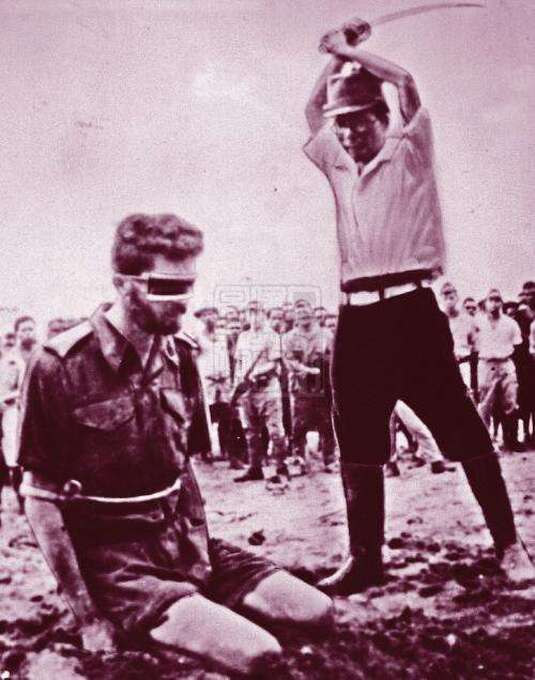
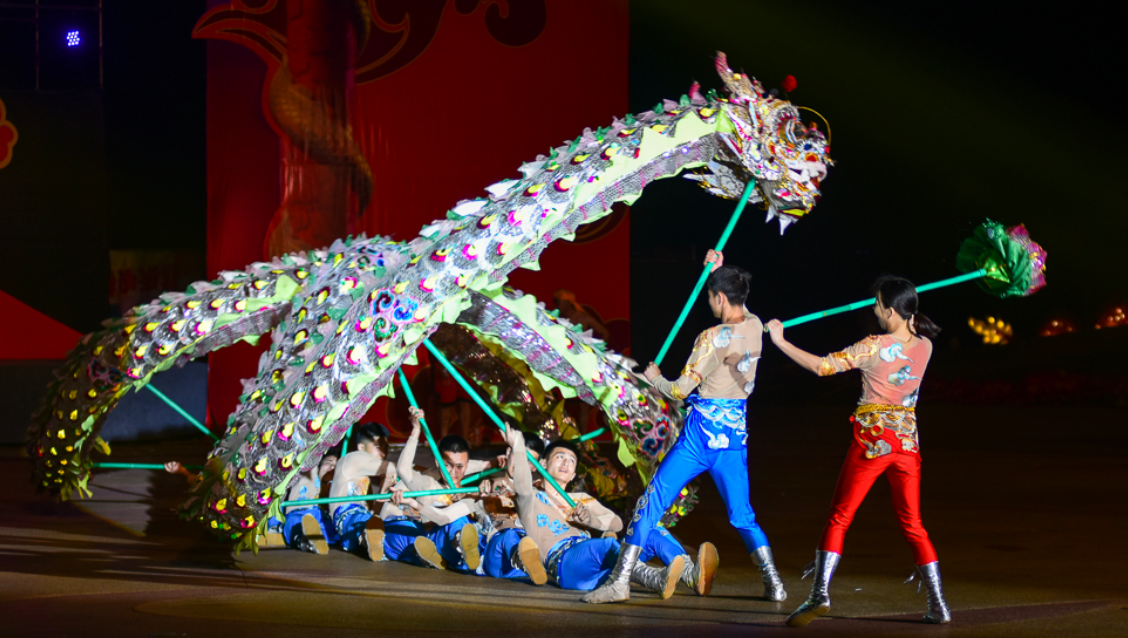

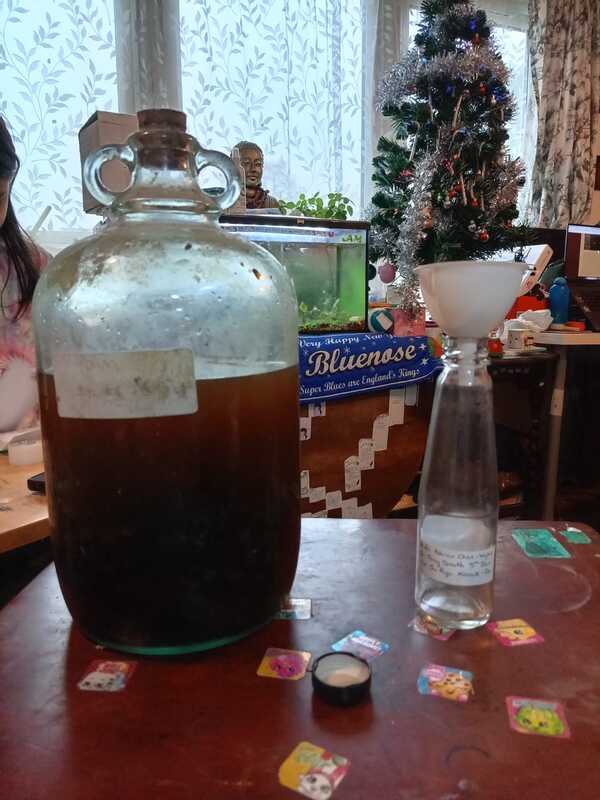
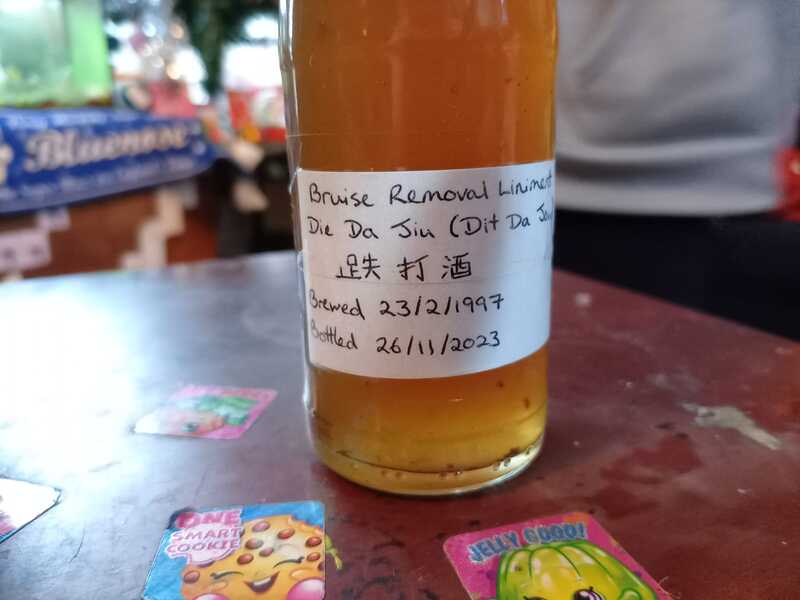
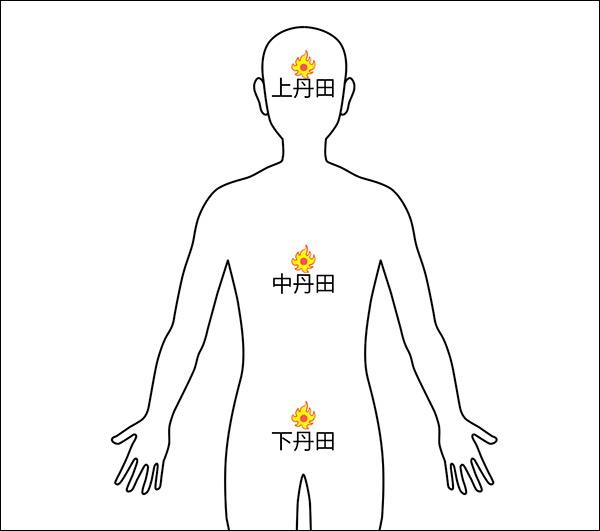
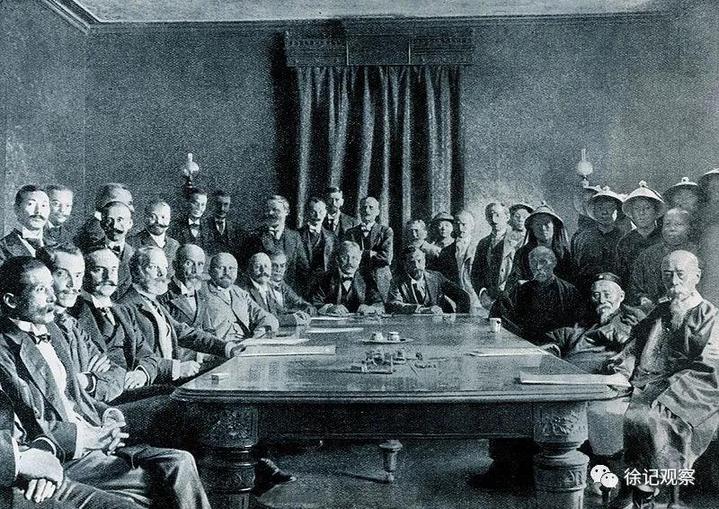
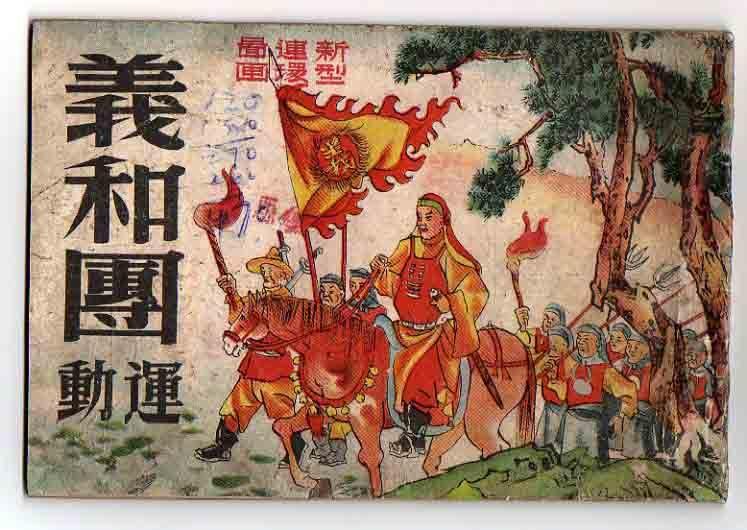
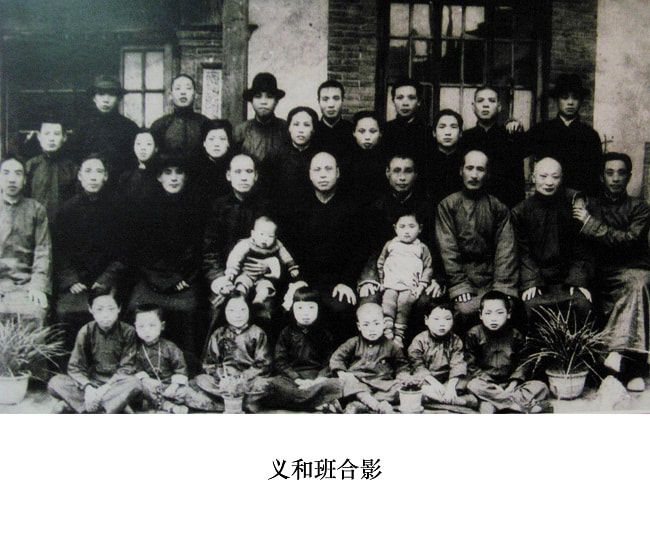
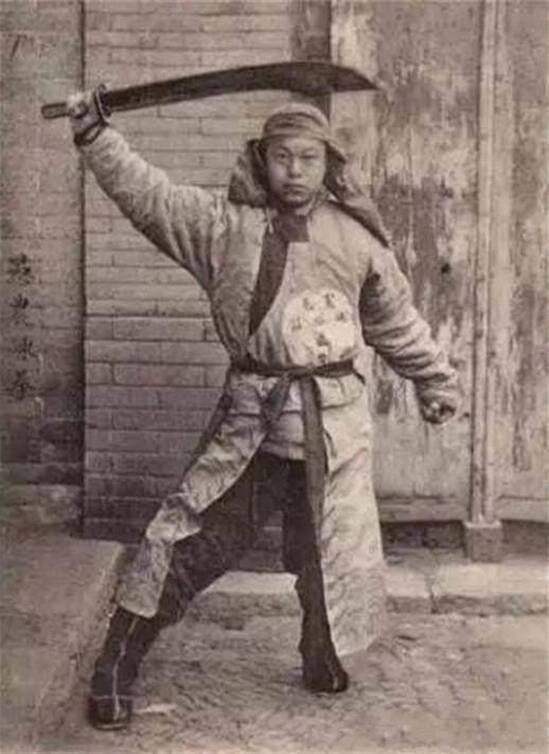
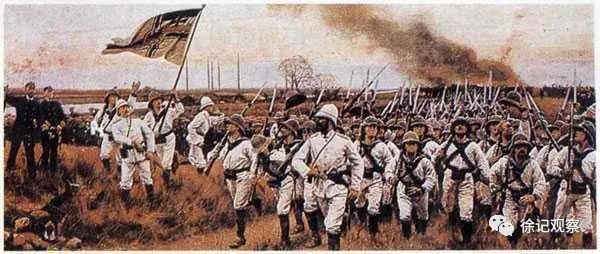
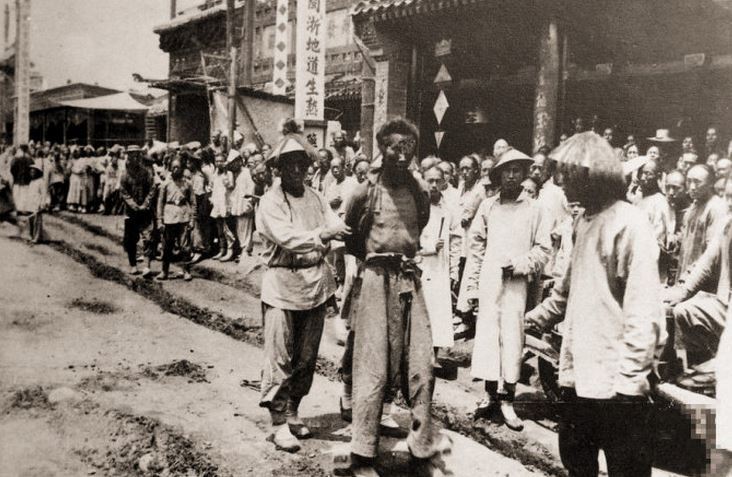
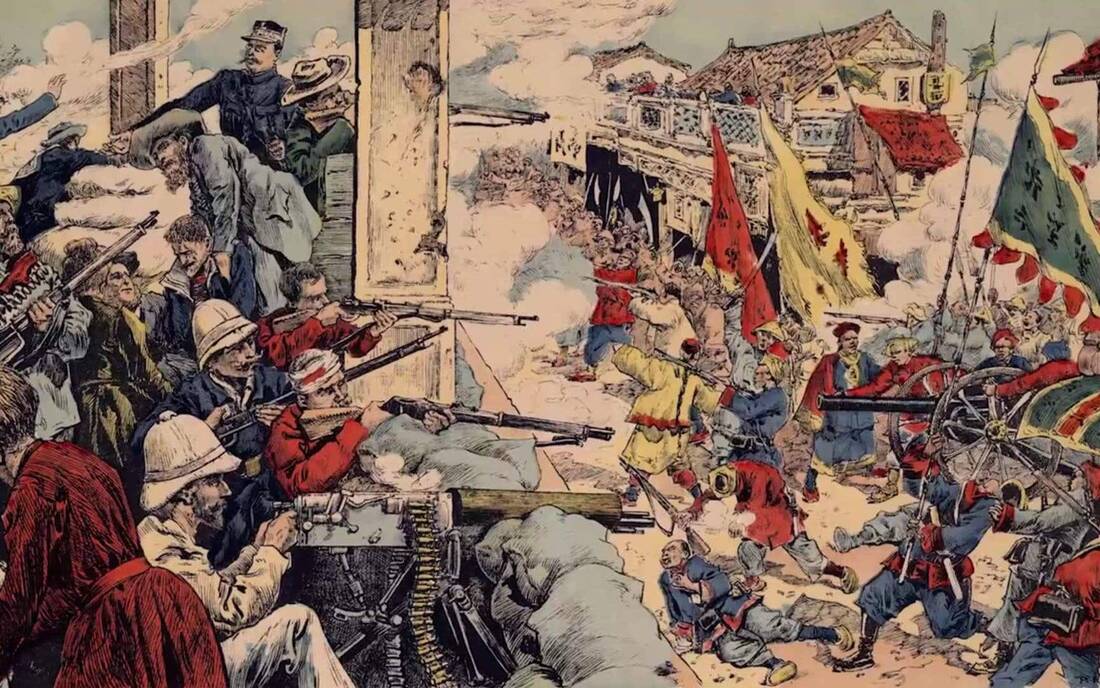
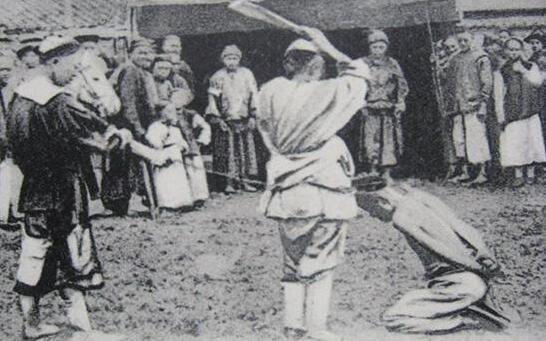
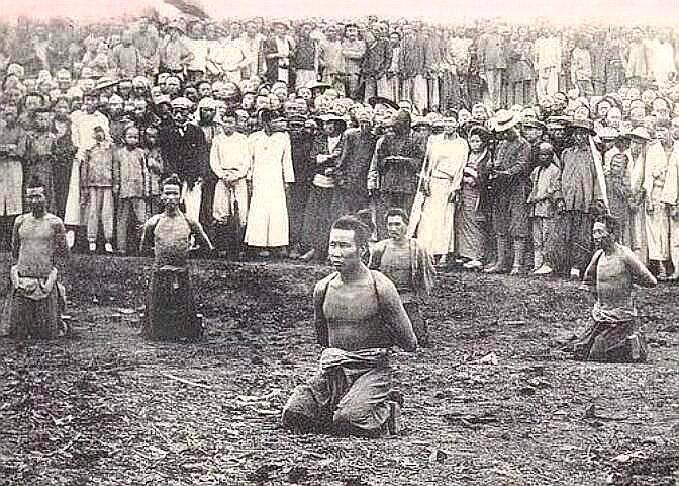
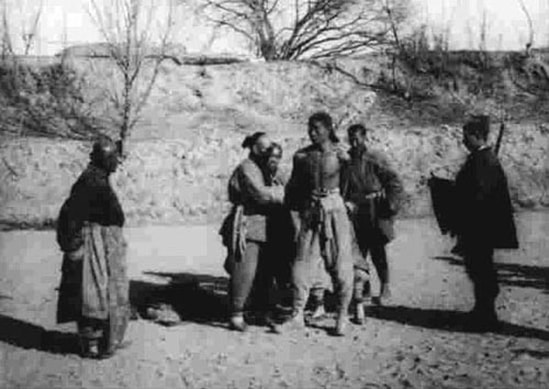
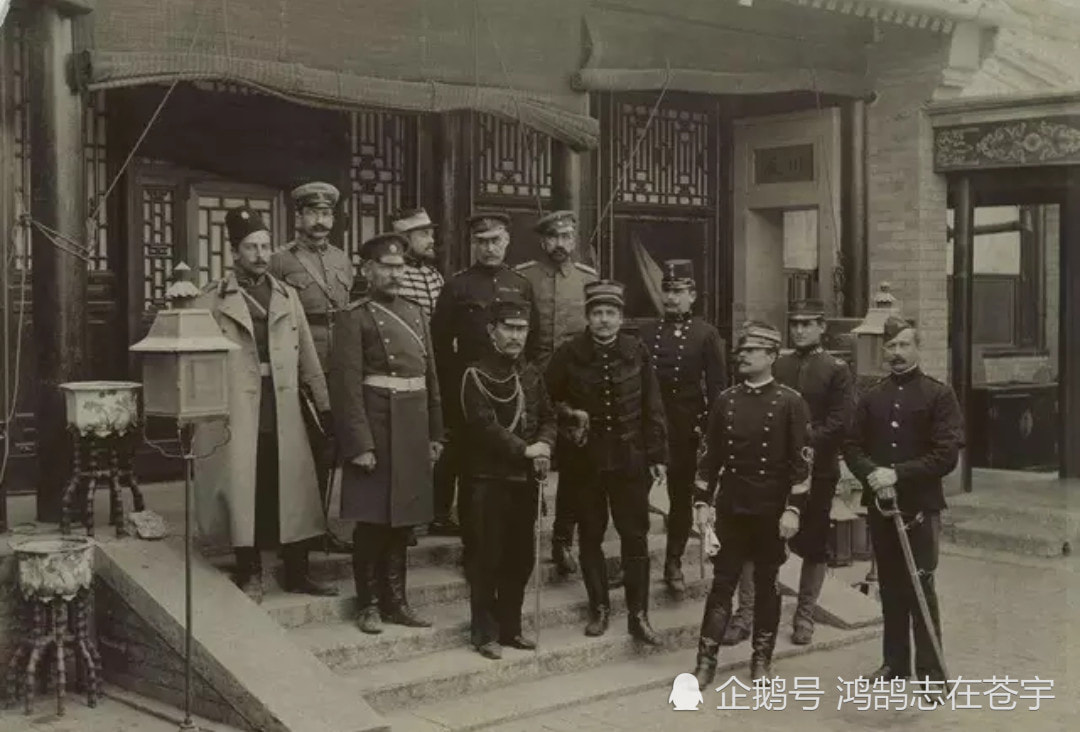
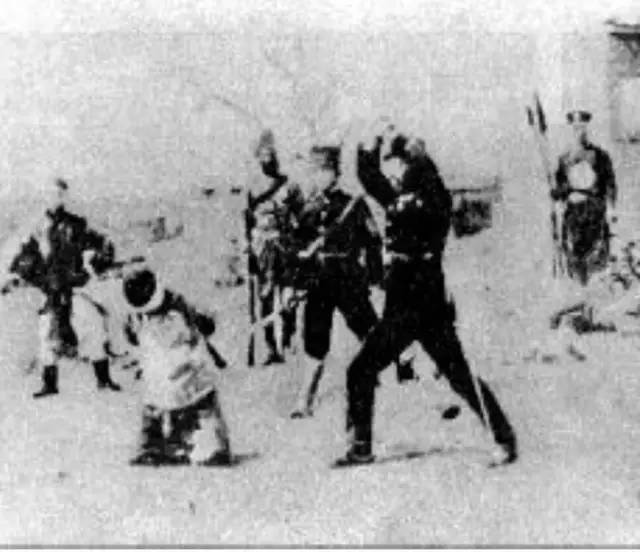
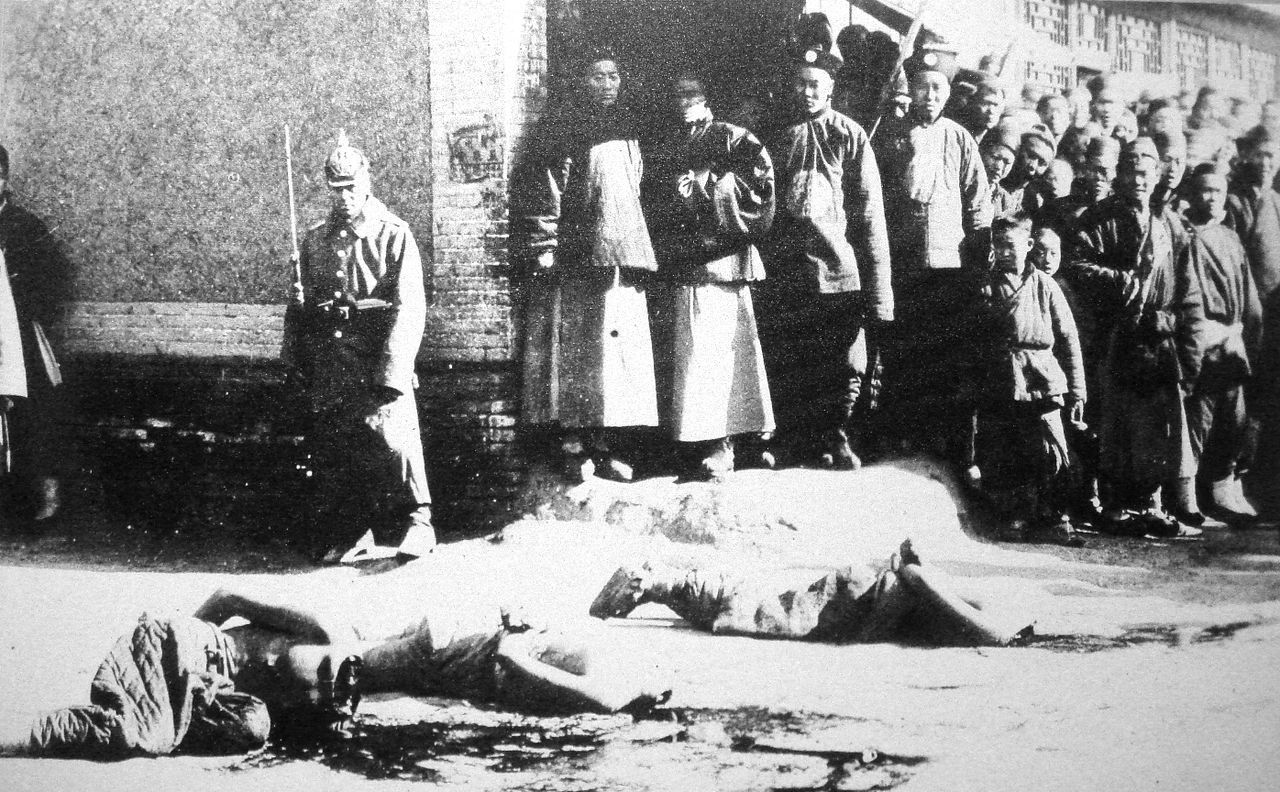
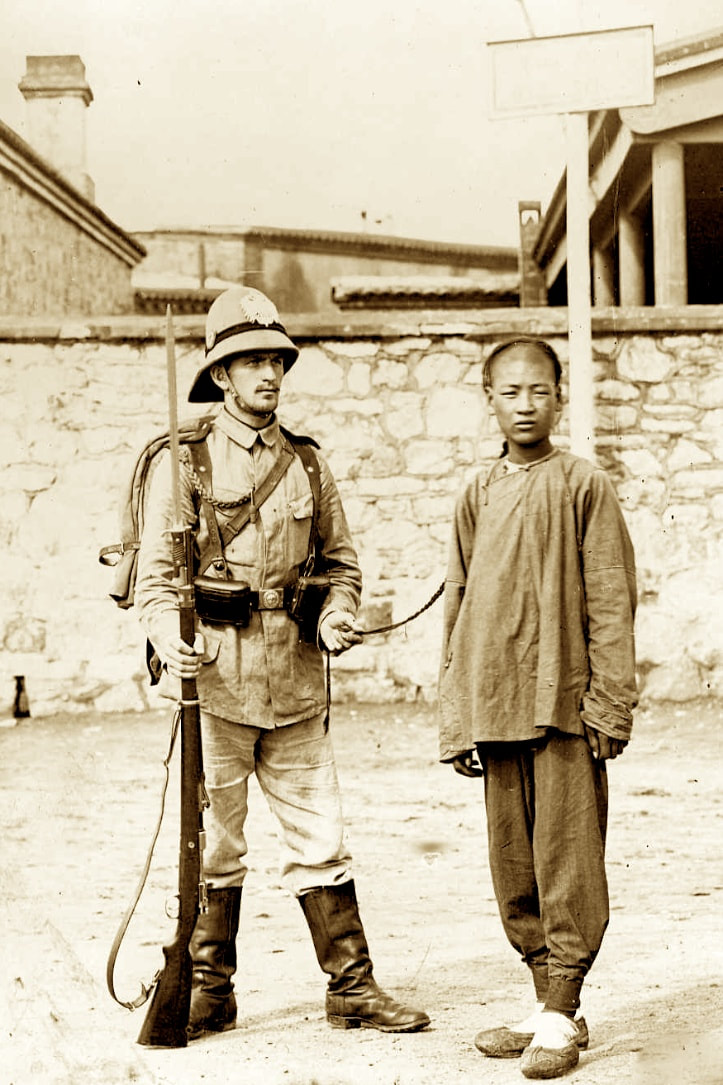
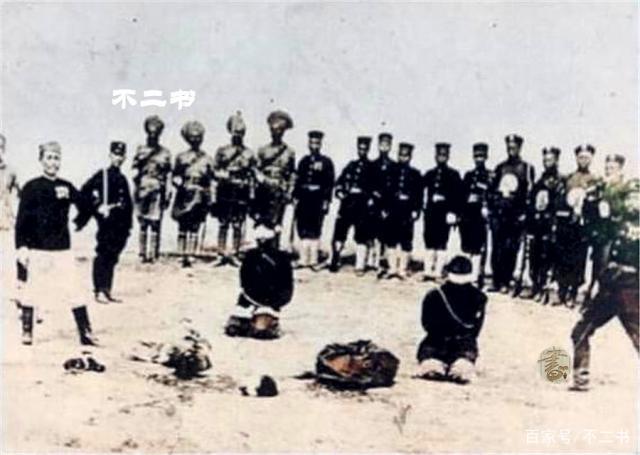
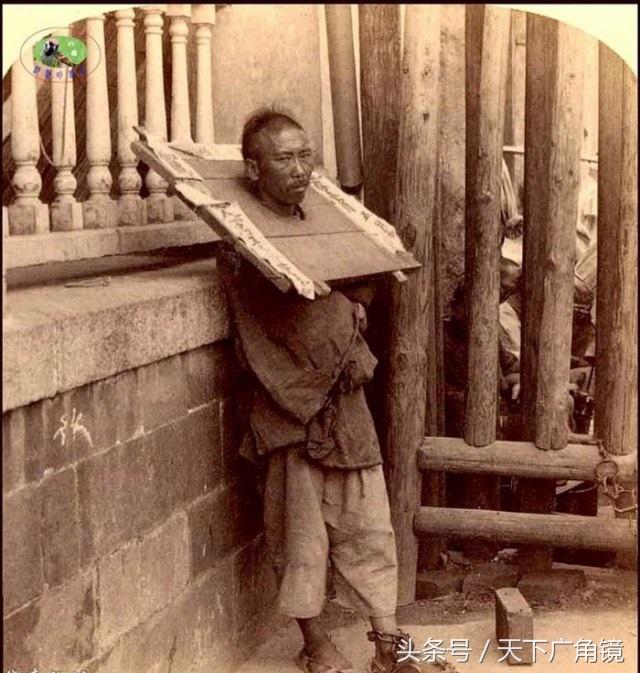
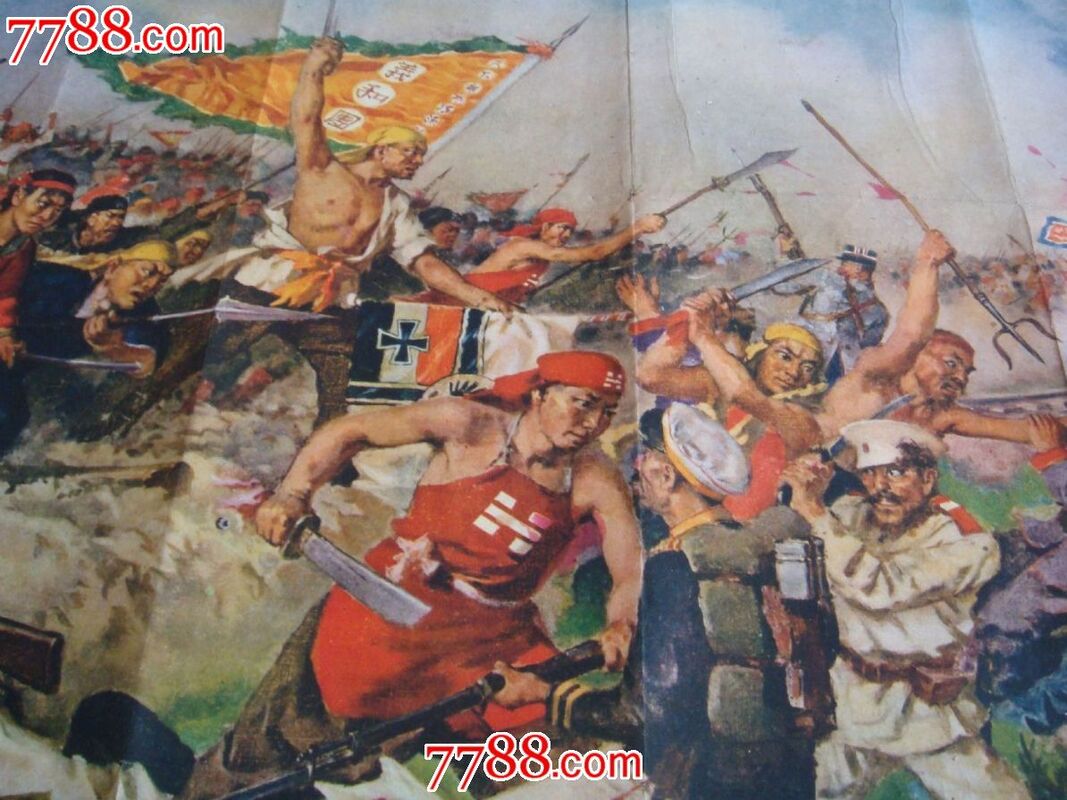
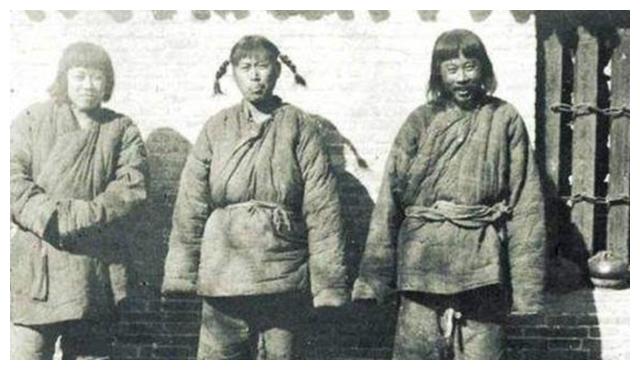
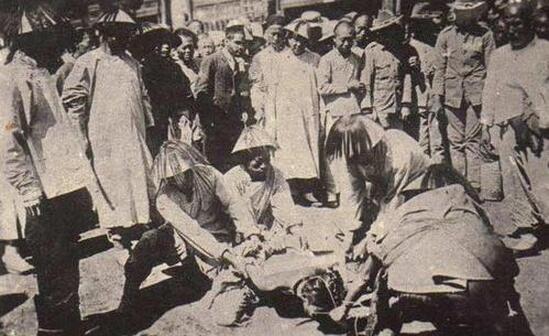
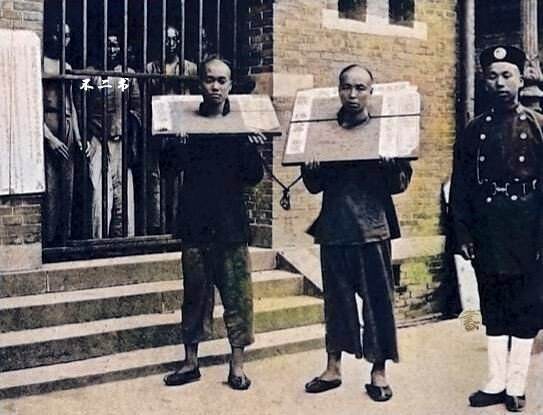
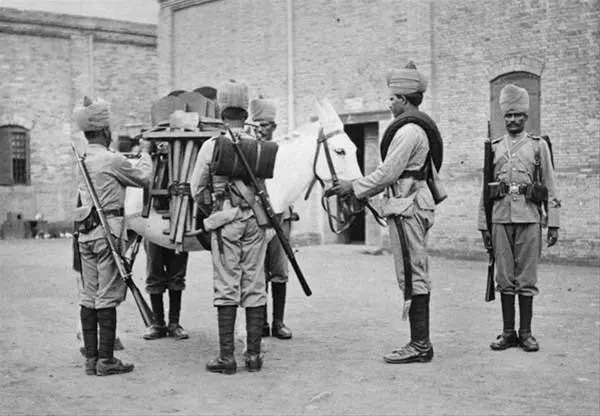
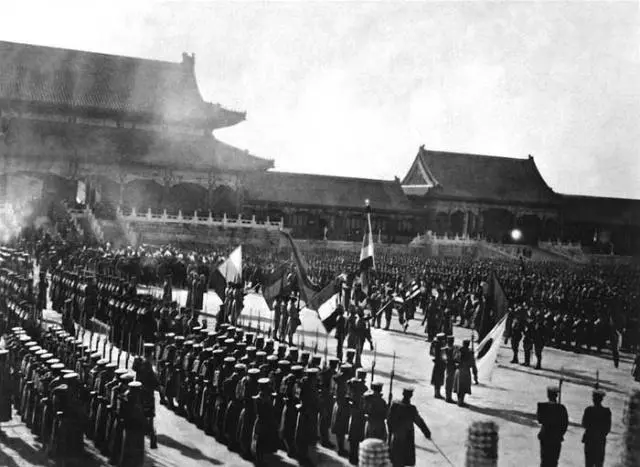
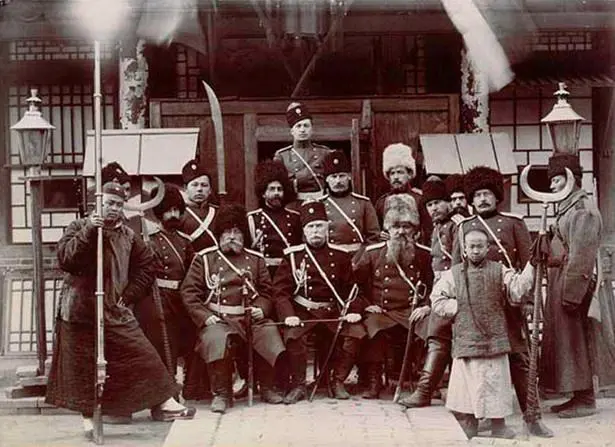

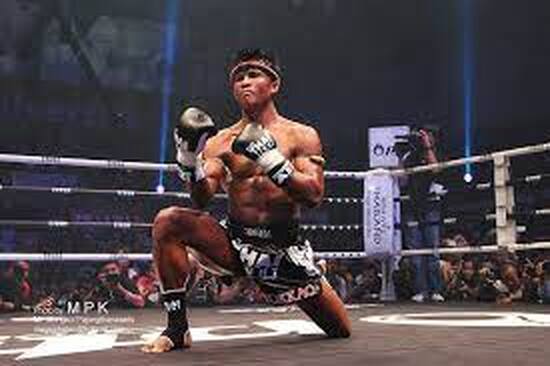
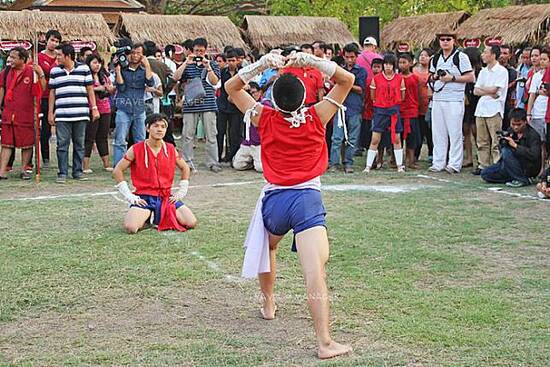
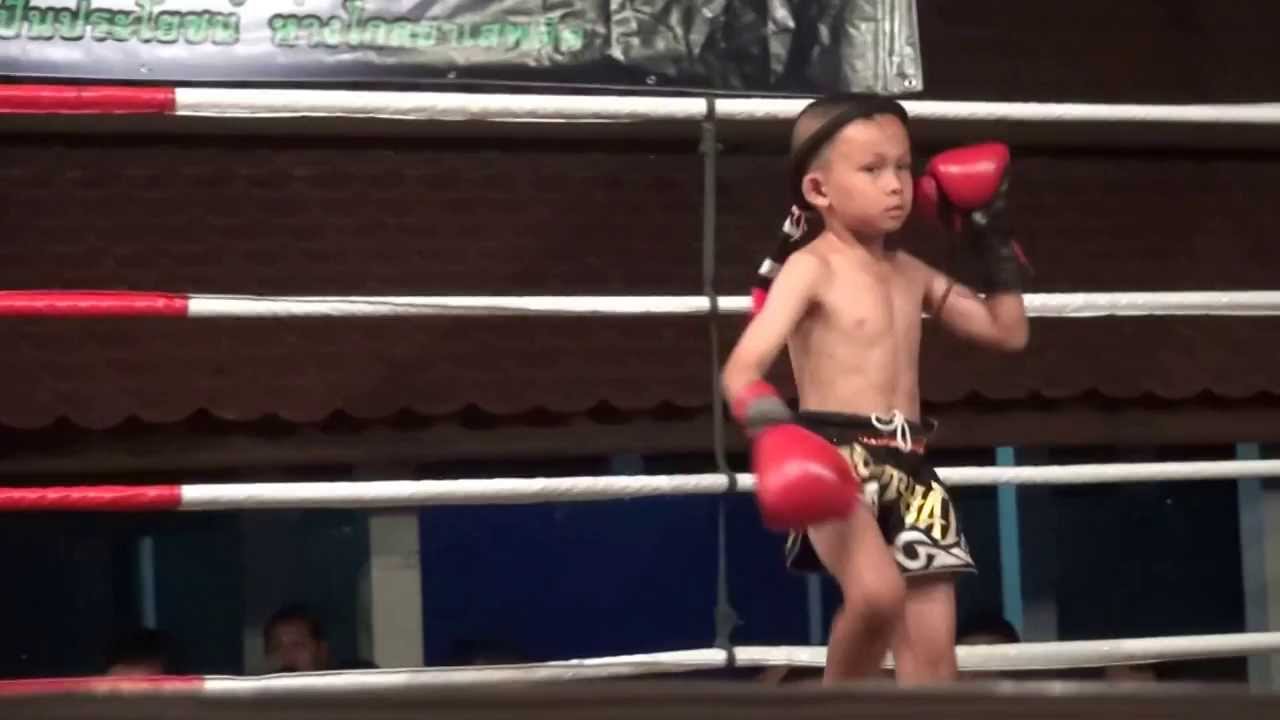
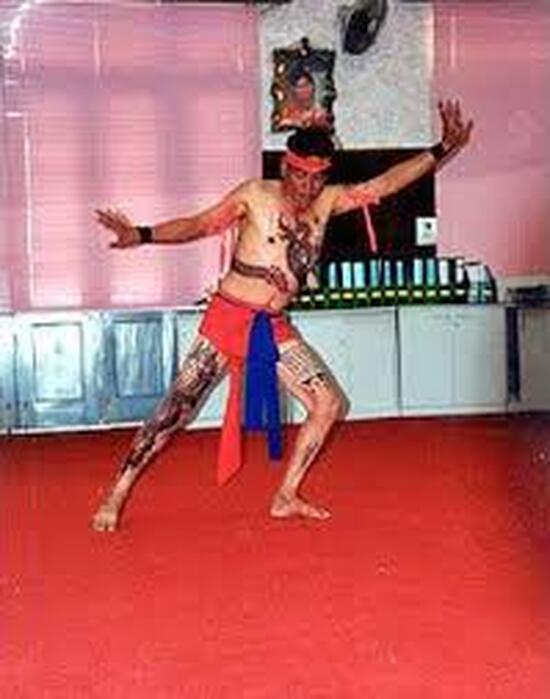
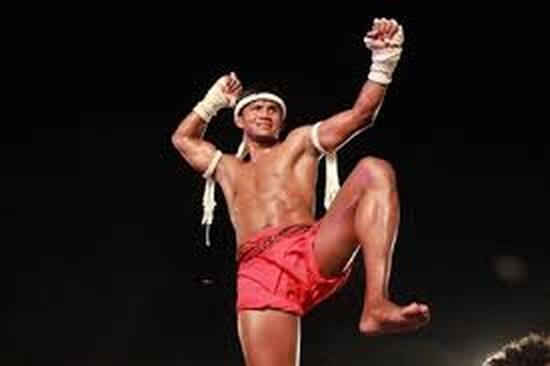
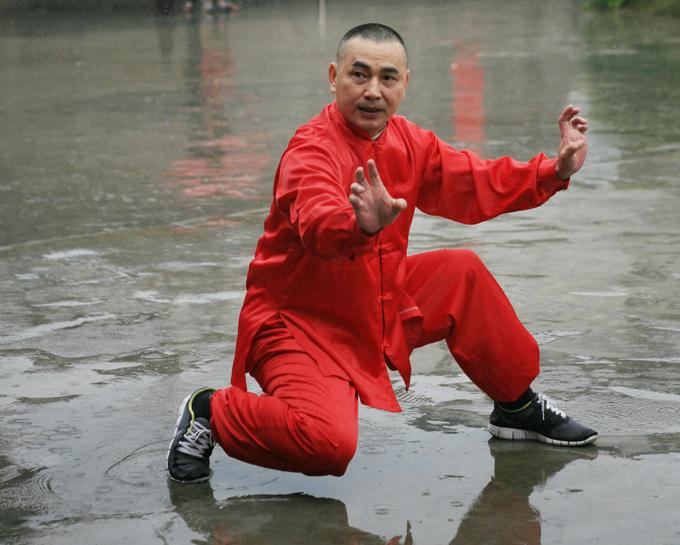
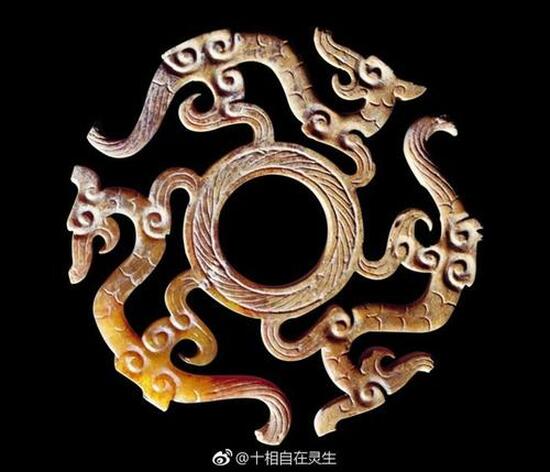
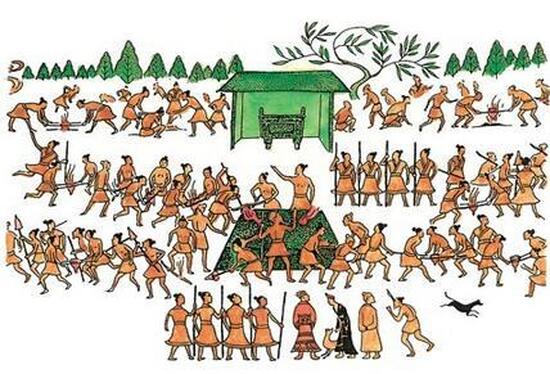
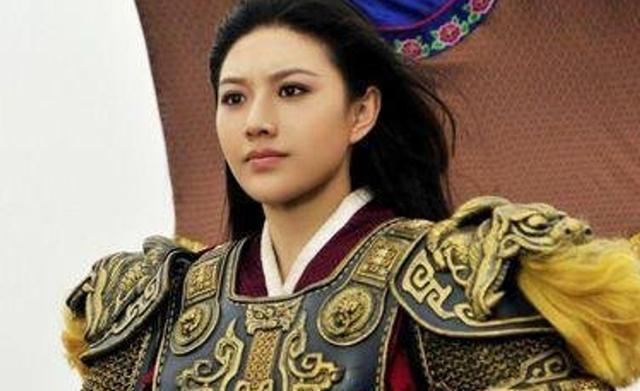
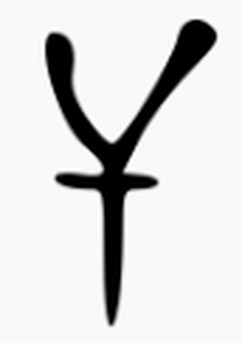
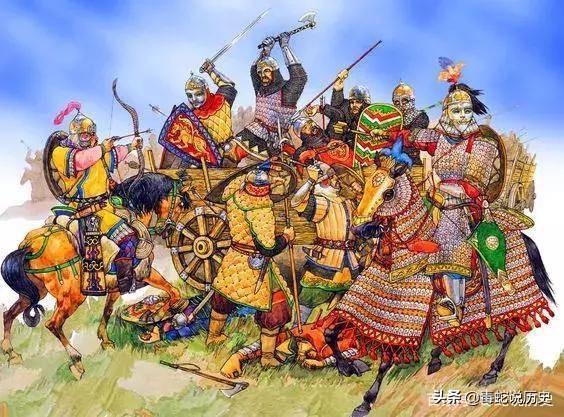
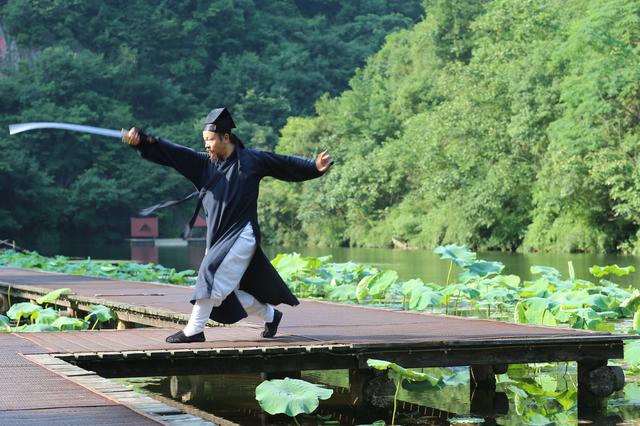
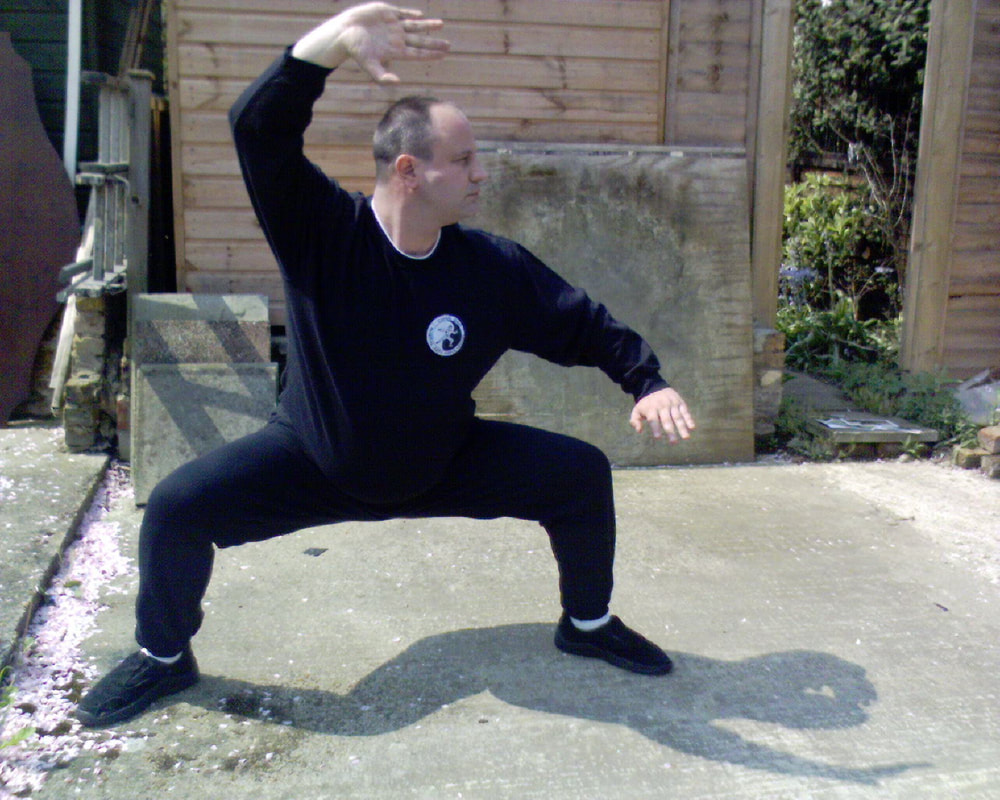
 RSS Feed
RSS Feed